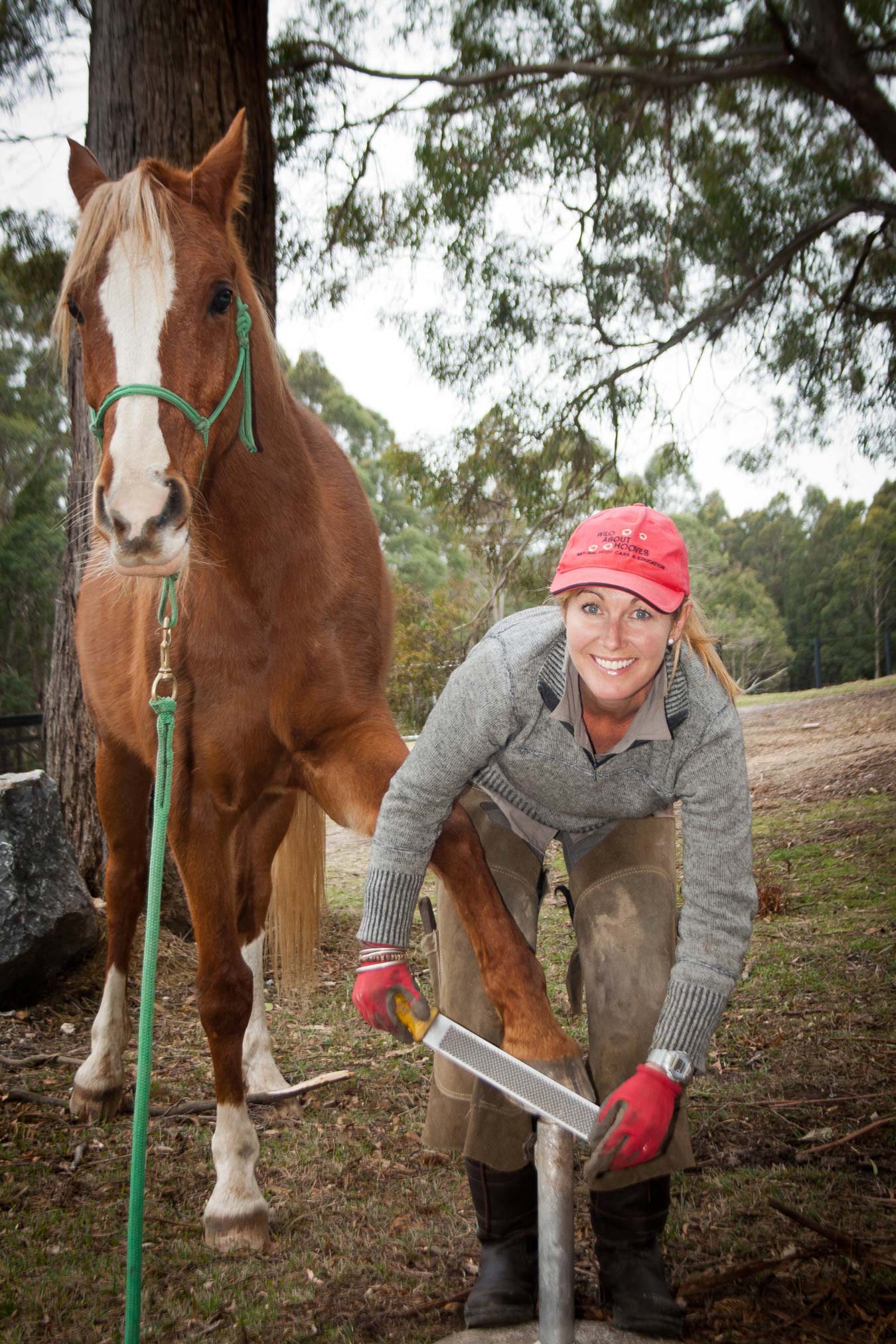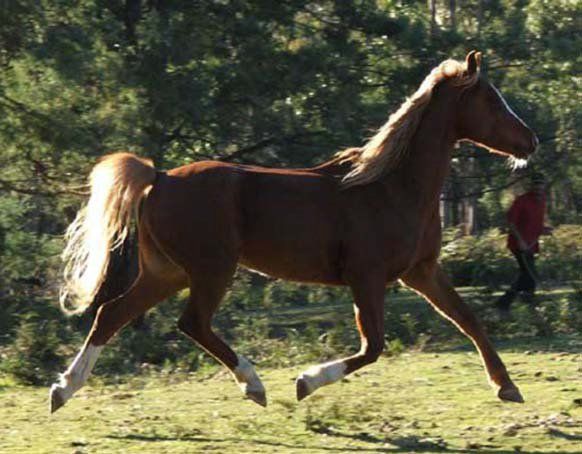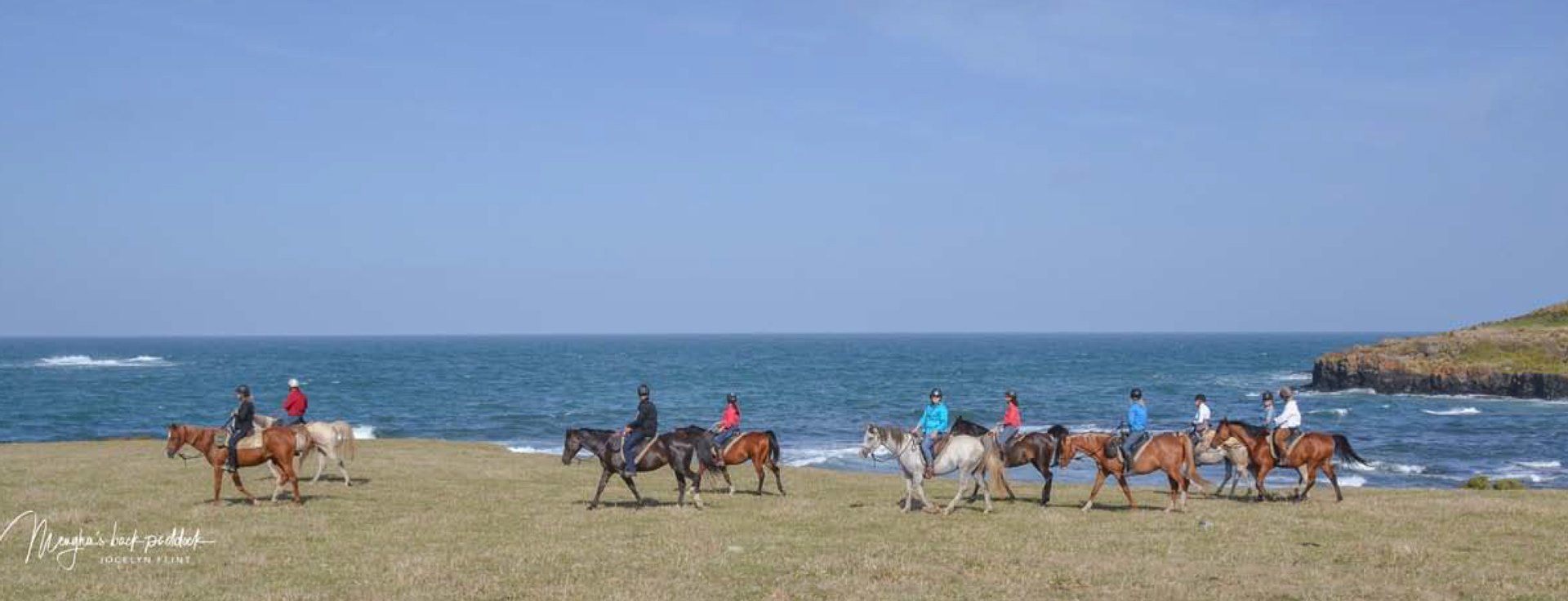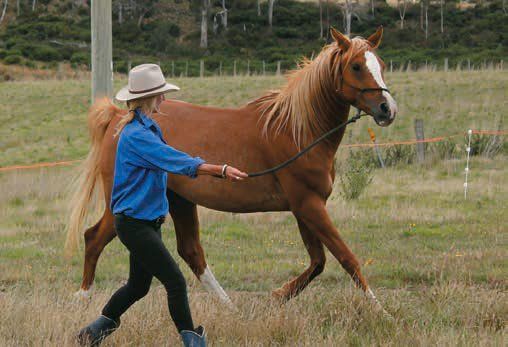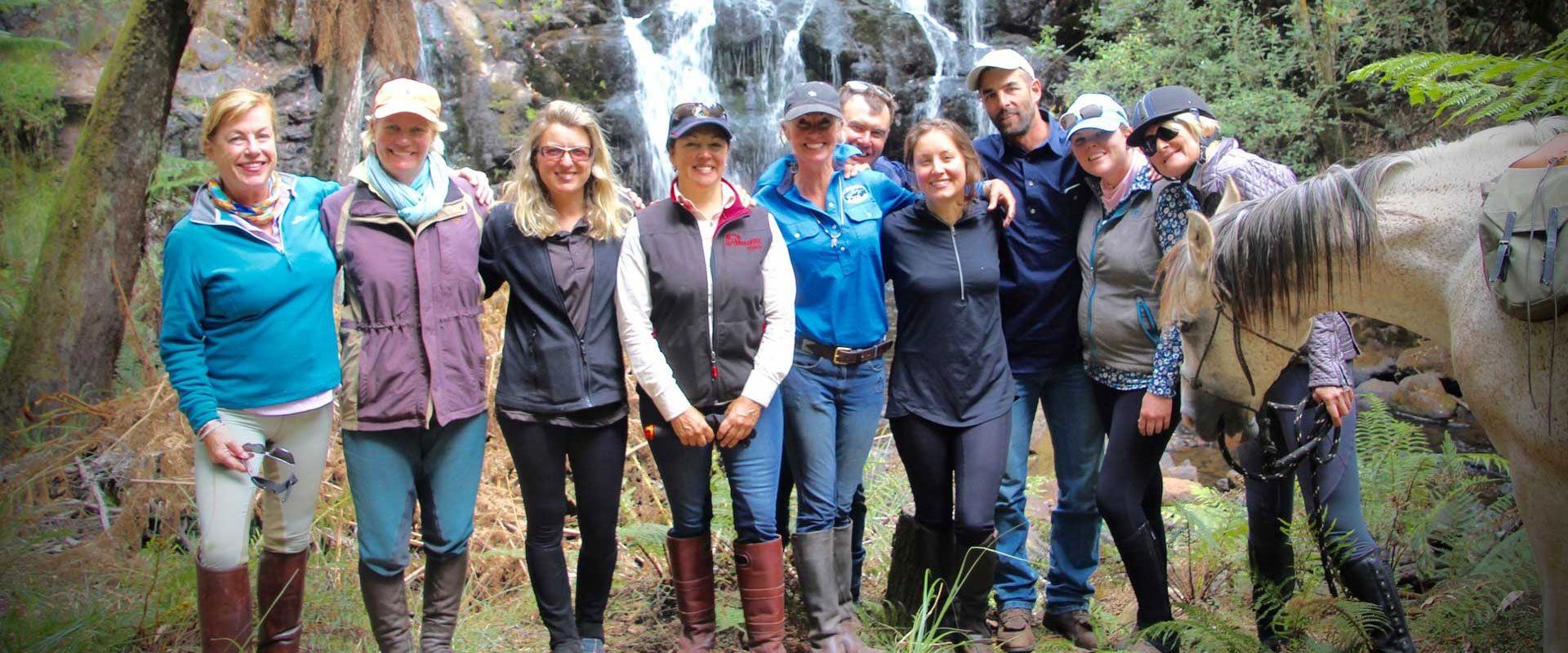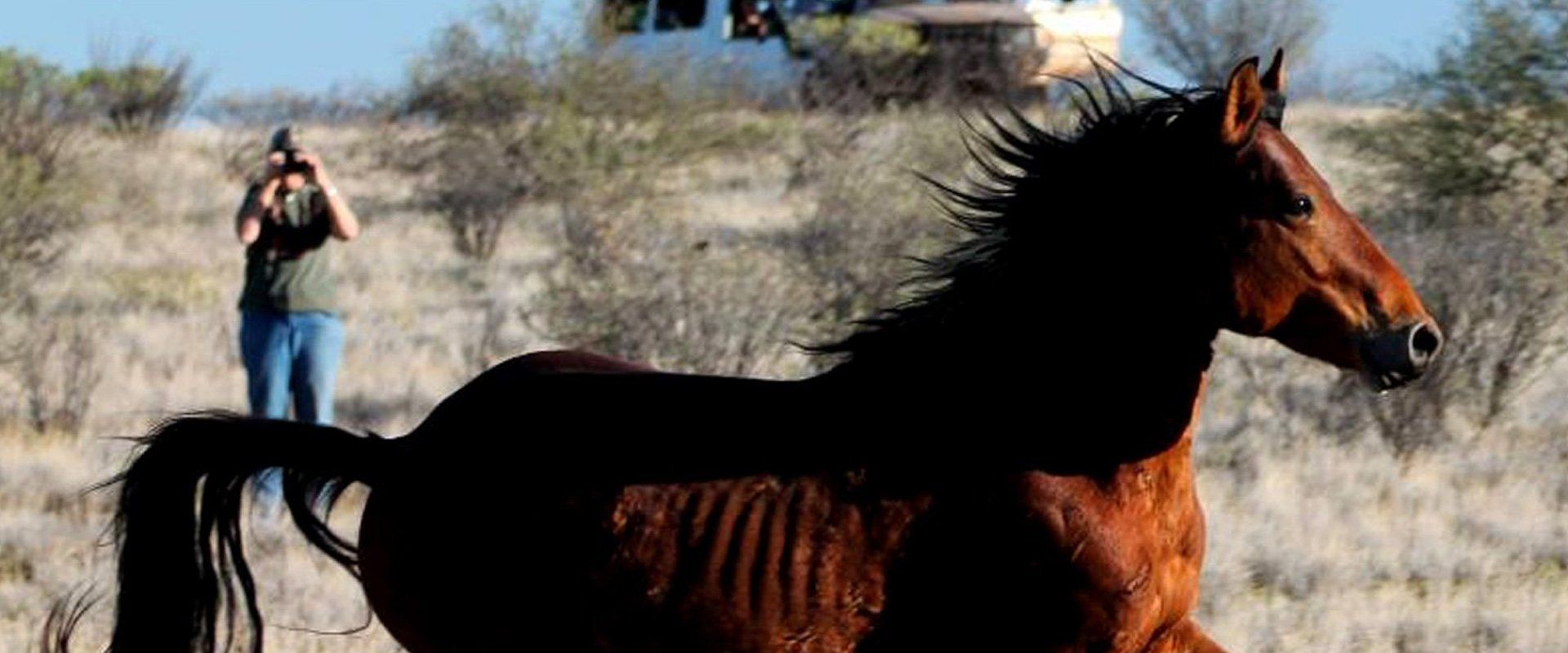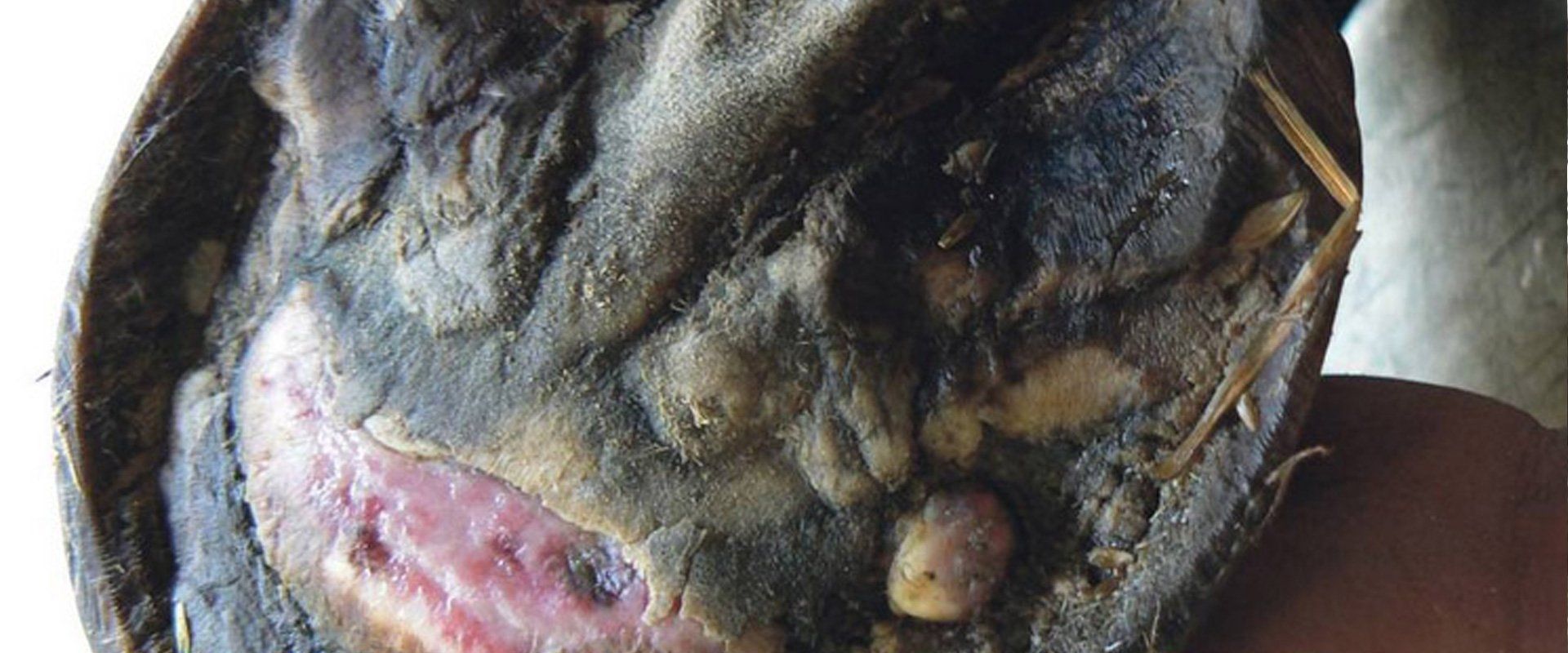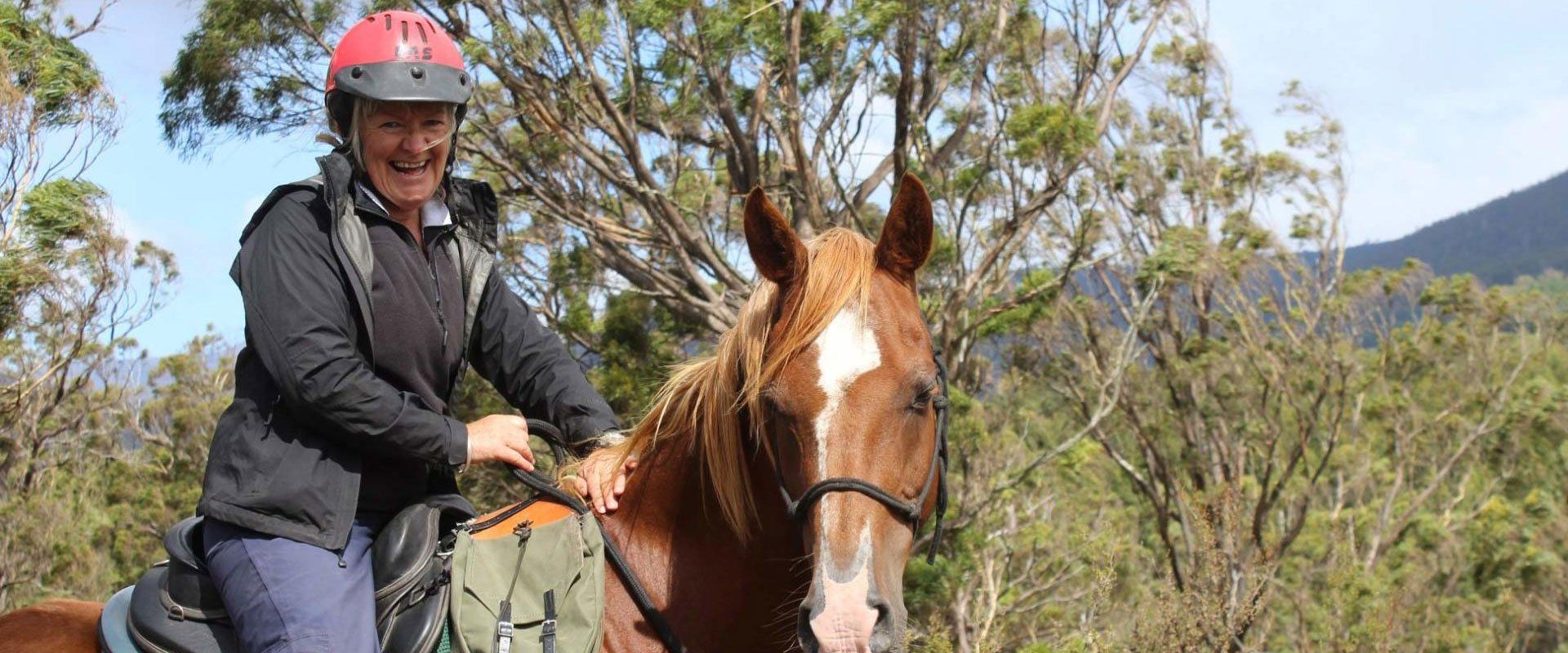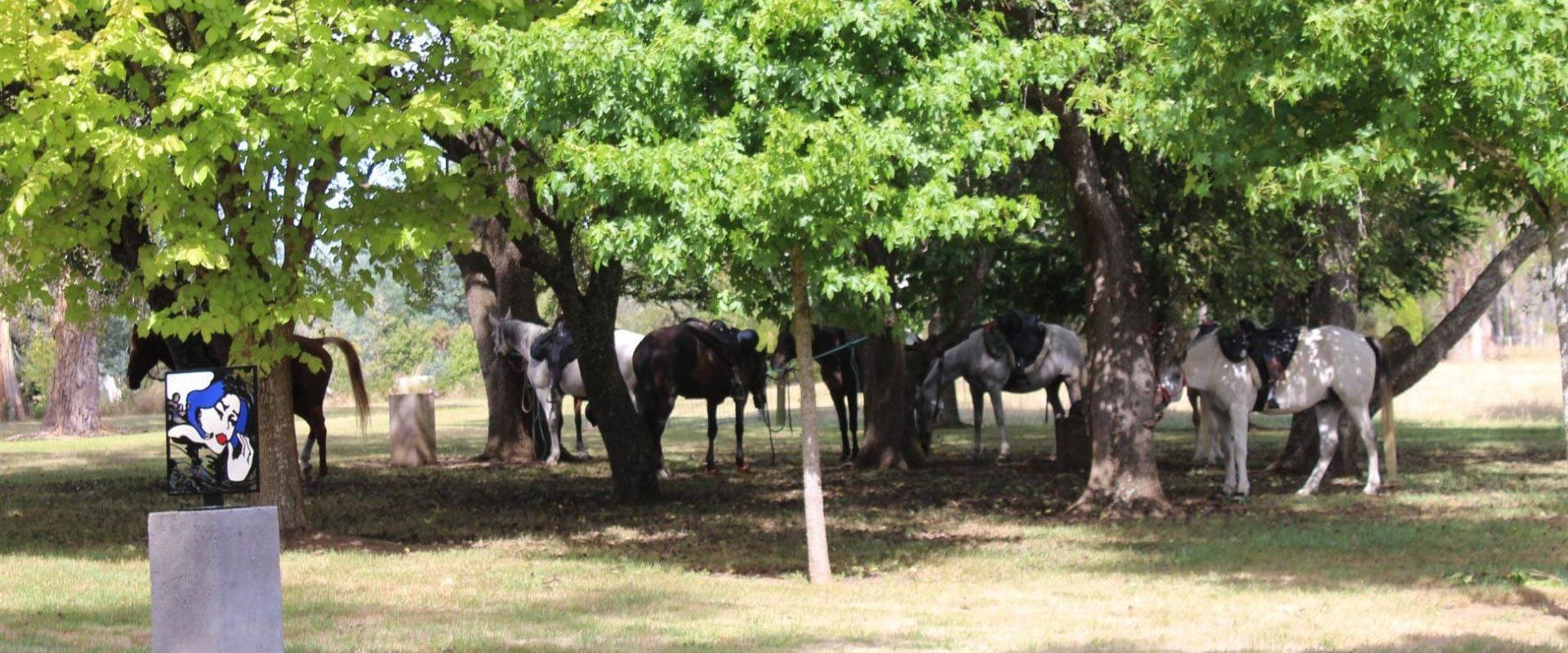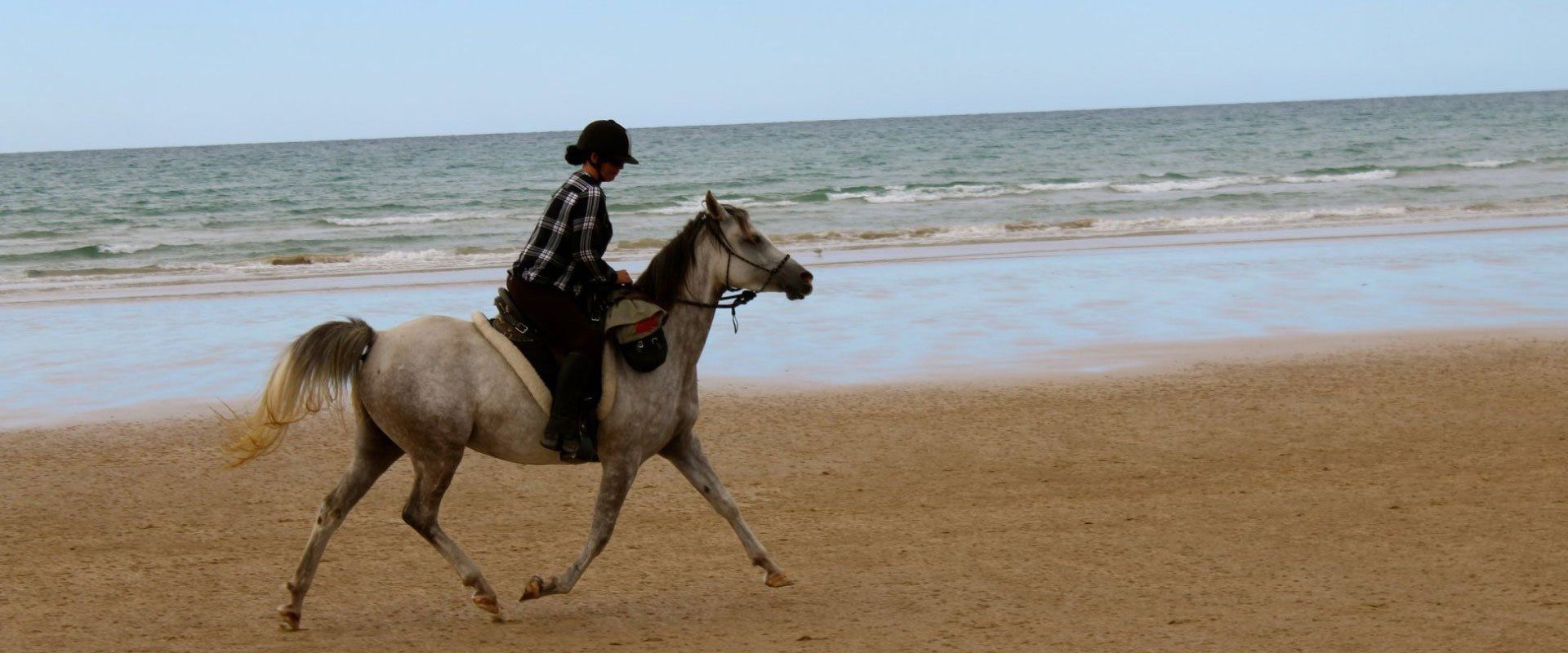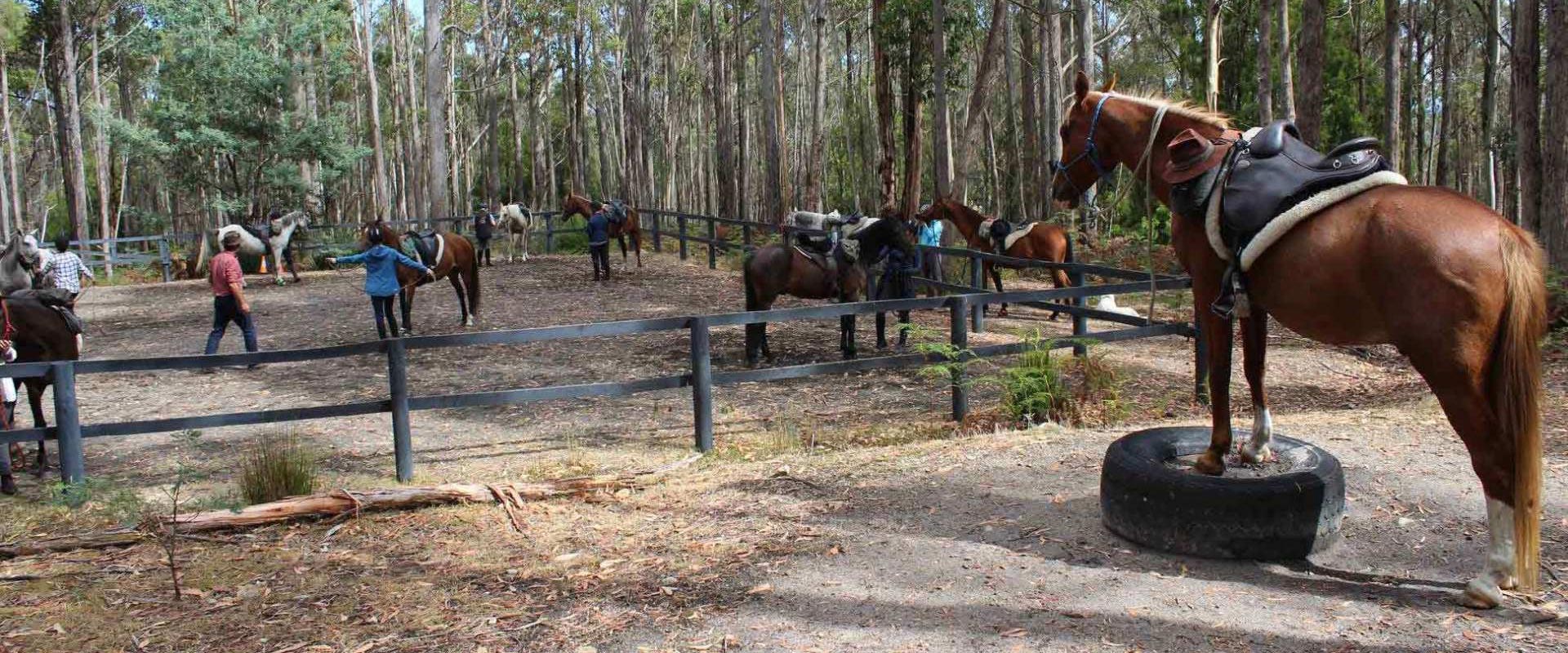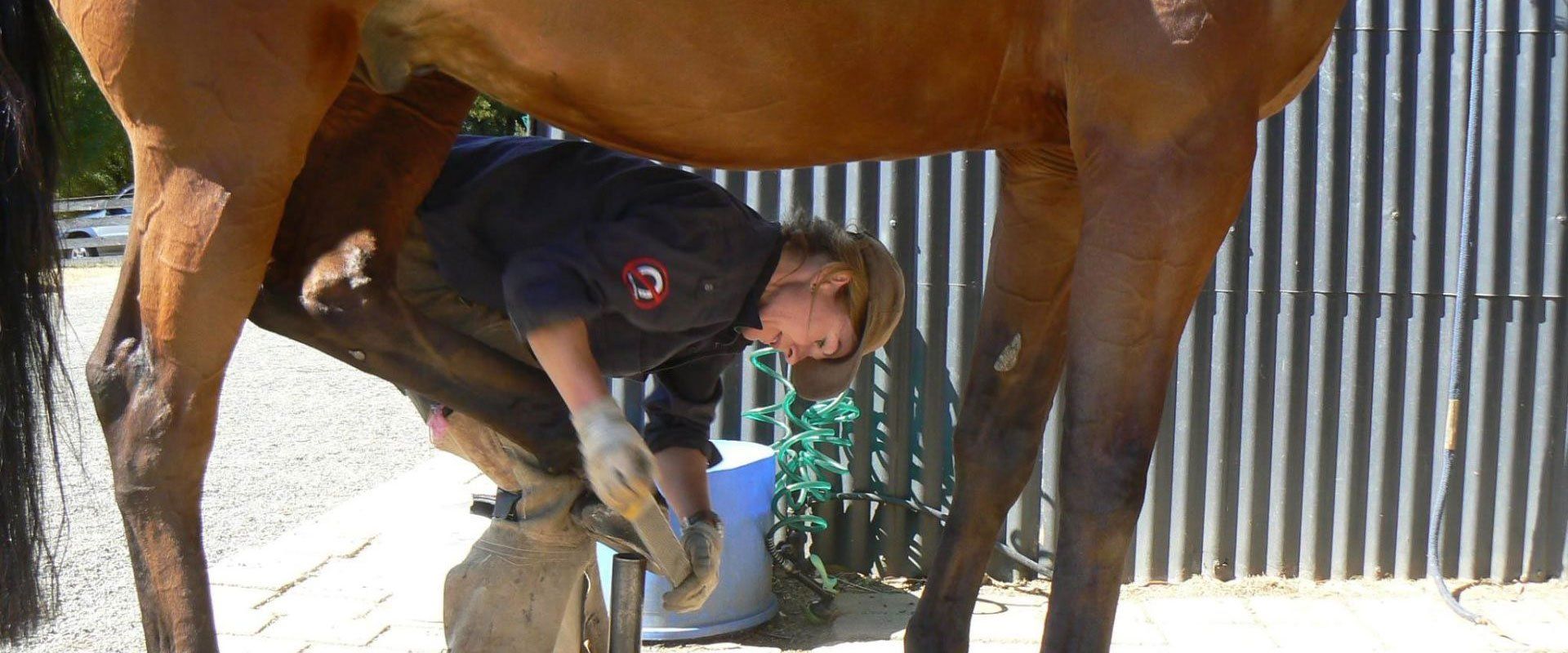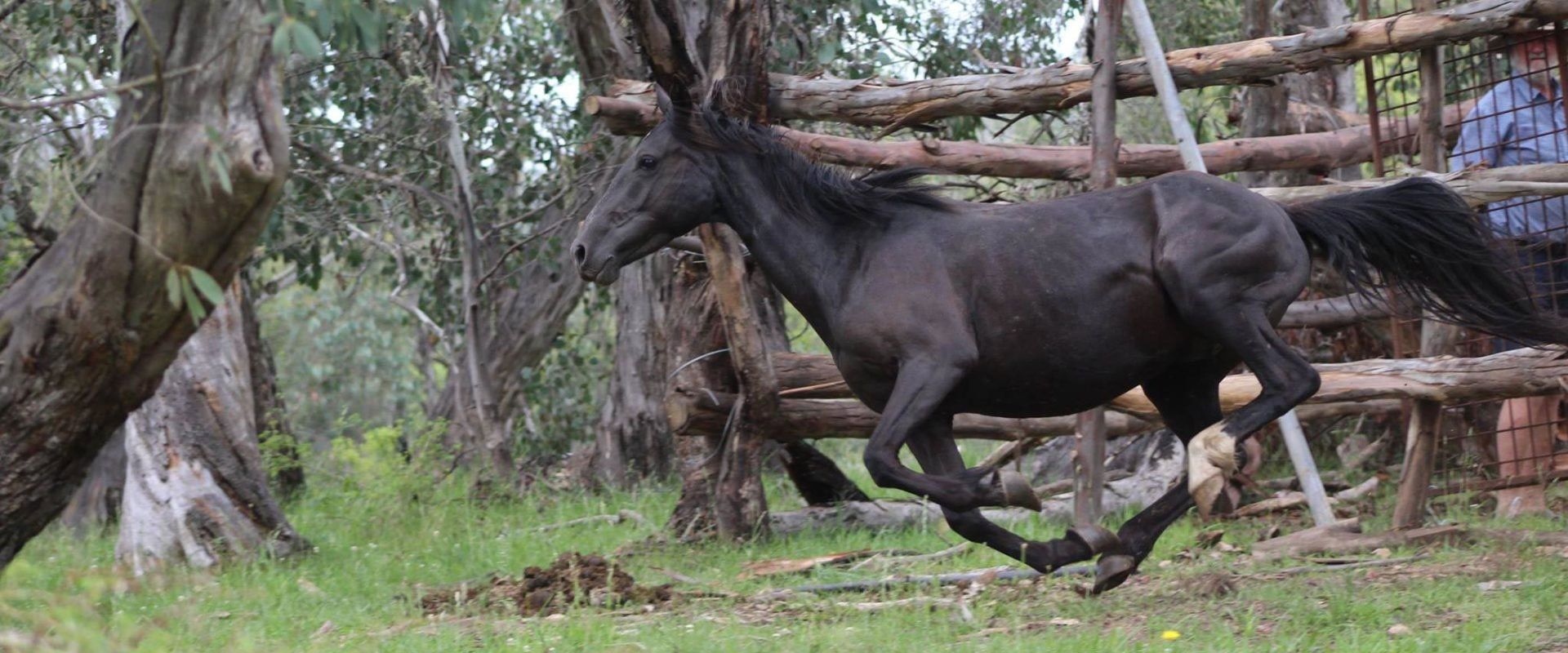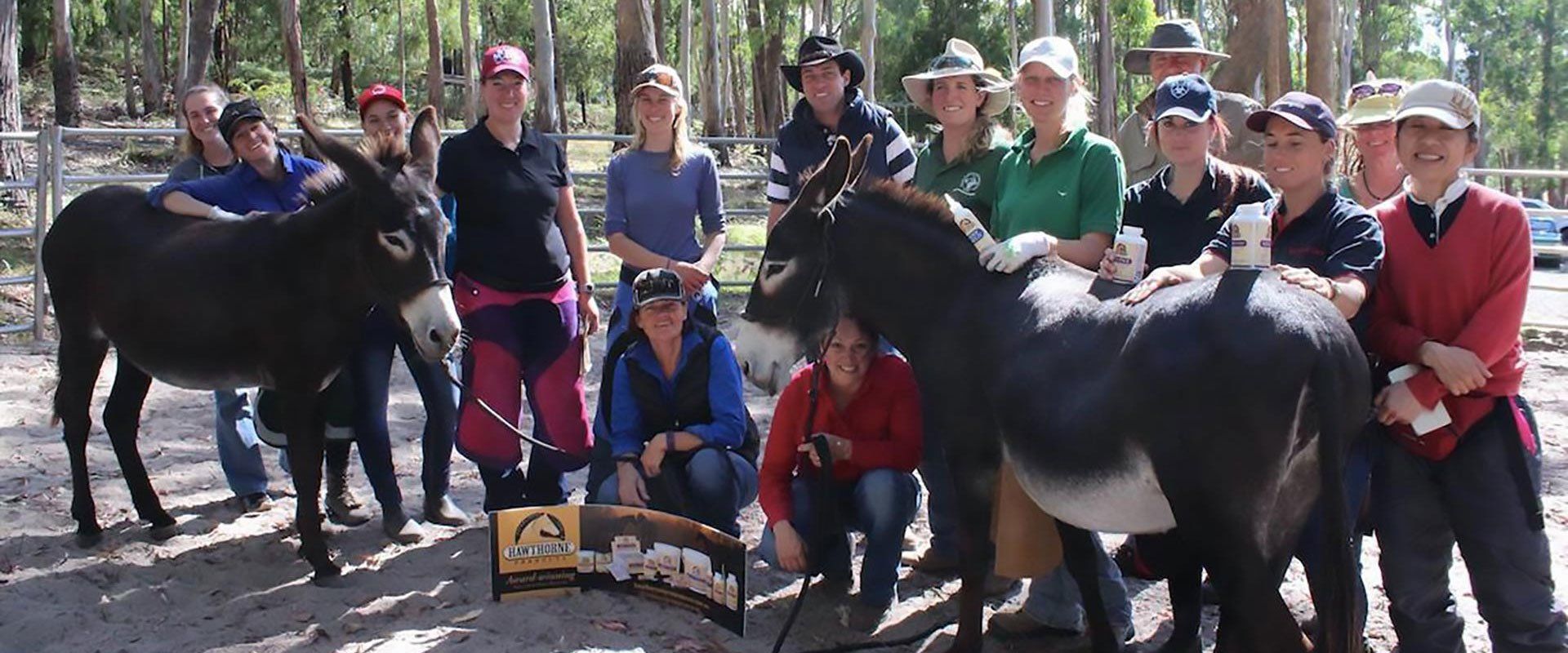WE'RE WILD ABOUT HOOVES
special feature blog
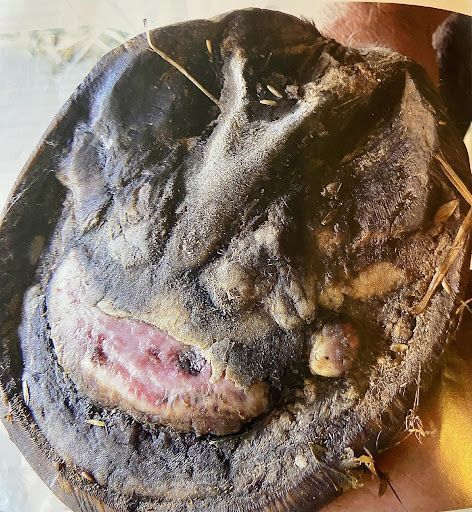
18 April 2023
Laminitis kills thousands of horses every year, and leaves thousands of others debilitated with lameness. It will and can affect any horse. And for you, the horse owner it can be devastating: you feel guilty and heartbroken at your horses suffering, confused with all the information as it is typically explained by professionals in scientific terms that can be difficult to understand, costly veterinary bills and you have the major task of nursing your horse back to recovery. . Unseasonal weather patterns around Australia with abundant rain and sunshine saw laminitis at a near epidemic last year. The reason being, that the environmental conditions can trigger increases in the sugar, starch and fructan. These collectively known as non-structural carbohydrates can cause laminitis in any horse or pony. Alarm bells ring this spring!! Be warned and be prepared, for prevention is better than cure.
JEN CLINGLY & JEREMY FORD
Jen Clingy and Jeremy Ford are horse lovers with a passion for hooves. Their aim is to elevate knowledge and inspire education in hoof care and horse keeping. They want to create a worldwide ripple effect of awesomeness with horses and get you wild about hooves.
This horse mad duo are Australia’s leading natural hoof care advocates and are always on the road teaching or in the saddle showcasing the importance of healthy, sound, happy horses.
WE ARE NATURAL HOOF CARE PRACTITIONERS
HERE'S WHAT WE DO!
- Qualified Hoof Care Practitioners, Hoof Trimmers, Hoof Rehabilitation specialists,
- Educators. Trainers – One Day Learn to Trim workshops AUSTRALIA WIDE.
- Lecturers – in 12 month course in Equine Hoof Care http://www.australianhooftrimmers.com
- Co-directors of ACEHP the Australian Certified Equine Hoof Care Practitioners. The big brand in representing and promoting quality and qualified hoof care practitioners.
- Horse Riders – They are always in the saddle practicing what they preach!.
- Accomplished endurance riders both hold Quilty Buckles, they train and compete in endurance riding and agist internationally owned horses at ‘The Gem’ farm.
- Tool Makers – they design and develop tools and gear specifically for the trimming market – a loop knife and hook pick ‘all in one’ is by far the most popular tool for hoof trim professionals.
- Horse Riding Tour Specialists
- They offer “Wild horse study tours” to observe brumbies in Alice springs NT and they offer “Holidays on Horseback” – 5 day tours in Tasmania and the Barossa Valley.
- Educational Resource Providers – Their popular booklets ‘The Bare Facts’ and “the Founder Facts” are available in hard and digital copy. Plus numerous published articles on barefoot endurance riding, hoof care and Australia’s wild horses. Documentary Film Makers – ‘Running Naked’ premiered with a screening at Equitana 2008.
- Film is their favourite medium for education and they have also produced an instructional trim DVD and short films on rehabilitation. This can be purchased on the online store and viewed on youtube.
- Event management – Wild About Hooves co-ordinate hoof related seminars & workshops around Australia for key guest speakers.
JEN CLINGLY
Jen is an advocate for bare hooves. She and her horse, Imaj Zamir, have become a high profile barefoot endurance team. She was the first in Australia to successfully complete a 100 mile endurance ride, and the first in Australia to win an endurance ride outright on a barefoot horse. Their 5000km achievement and successful string of placings in endurance has proven time and time again that shoes are not necessary, even for long distance. She is passionate on her quest to educate others of the benefits of not shoeing horses.
Jen is currently working as a professional hoof care practitioner in Tasmania. She is a lecturer with the trade certificate in “Equine Hoof Care” course. Jen is also a freelance writer and features regularly in the ‘Horse Hoof’ magazine. She is also focusing on writing a book highlighting the healthy hoof and giving insight into training a barefoot performance horse. Jen is Jeremy’s right hand man (or more colloquially, his right hoof woman!).
JEREMY FORD
A farrier of 20 years is now a professional natural hoof care practitioner. After being introduced to barefoot trimming he has hung up his hammer and stored the anvil to promote healthy sound metal-shoe free horses.
Jeremy has been involved with horses all his life in all disciplines including hunting, endurance and stockwork. His encounters with wild Australian Brumbies in the outback were the major inspiration for the switch to barefoot. These horses have hooves hard, strong and able to cope with the hardest terrain. This natural world led him to study with the AANHCP (American Assoc of Natural Hoof Care Practitioners).
Jeremy currently runs educational workshops on hoof care. He is principal lecturer in the Equine Hoof Care certificate course run by Global Net Academy. The only hoof care course in the world recognised by Government Training Framework and the best in practical hoof care education.
When not working, Jeremy trains and starts horses under saddle for their horse-riding tourism team.
WE LOVE TO BLOG!

18 April 2023
Laminitis kills thousands of horses every year, and leaves thousands of others debilitated with lameness. It will and can affect any horse. And for you, the horse owner it can be devastating: you feel guilty and heartbroken at your horses suffering, confused with all the information as it is typically explained by professionals in scientific terms that can be difficult to understand, costly veterinary bills and you have the major task of nursing your horse back to recovery. . Unseasonal weather patterns around Australia with abundant rain and sunshine saw laminitis at a near epidemic last year. The reason being, that the environmental conditions can trigger increases in the sugar, starch and fructan. These collectively known as non-structural carbohydrates can cause laminitis in any horse or pony. Alarm bells ring this spring!! Be warned and be prepared, for prevention is better than cure.
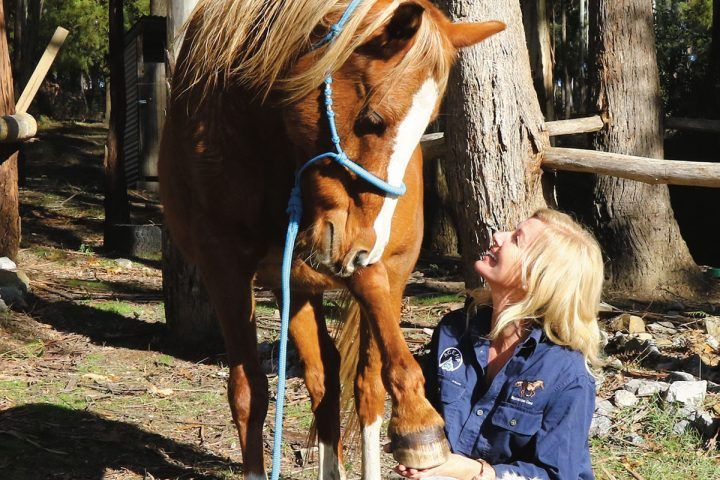
by Jen Clingly - Wild About Hooves
•
29 November 2020
The extraordinary relationship between humans and the horse has been running since before the birth of Christ. Indeed, there is evidence our domestication of horses goes as far back as 3500 BC. And ever since we recognised the utilitarian value of the horse, there has been the horseshoe. The use of horseshoes has become an almost unquestioned tradition. Humans have been nailing shoes onto horses’ hooves for well over a thousand years. Who can remember back to a time otherwise?

by Wild About Hooves
•
19 November 2020
There is nothing quite like getting hands-on when you are learning the art of trimming horses hooves. Wild About Hooves popular weekend workshops allow their students plenty of opportunity to ‘have a go’ in a situation as close to real-life. Students start practicing by trimming horse’s cadaver legs, they also practice positioning themselves under a horse safely and ergonomically. Students retain more information when they physically practice, instead of just seeing or hearing it. However, when a worldwide pandemic puts a stop to everything, and public events banned, border restrictions in place, and other impacts make it impossible to travel and train in person, Jen Clingly and Jeremy Ford decided to adapt and reinvent their learn to trim courses. “We can still bring this “learn-by-doing principle” of adult learning into what we are teaching regardless of whether we teach online or off line.” Clingly highlights. “But it is challenging especially for us to articulate clearly and demonstrate without the constant interaction of questions and answers that face to face provides.” When it comes to traditional face-to-face training, the principle of maintenance hoof trimming is easy to grasp and execute. So how do the team at Wild About Hooves deliver their online hoof care course? How do students learn to do it themselves in an environment where they are not physically present to perform practical exercises? Online teaching requires very different approaches to teaching face-to-face for obvious reasons. Wild about Hooves shares 4 ways of teaching a practical skill via online training. 1. Get as Visual as Possible When it comes to practical training, or teaching learners new skills, we created loads of visual with power point lectures and ‘live demonstrations of trimming.’ People learn in many different ways – visual, auditory and kinaesthetic. By delivering information online, we want to make sure we enable all the different type of learners to engage with our hoof care principles. Providing visual diagrams, animations and dot-pointing our information all helps alongside a video showing a real life demonstration of the skill in a environment that is as close to what will happen out in the field. We try and get the camera in close to the hoof to show the trim process step by step. When the brain can ‘see’ how something is done before it is attempted independently, the chance of success are much higher than just reading or hearing about it. 2. Get on Camera Much out of our comfort zone, we got ourselves on camera. People like people, and it can significantly enhance the engagement, retention and completion rates of our course if our learners can see us talking to them. We don't have the budget for a professionally filmed training video, but we put together some good ‘how to’ trim footage and this also enables people to engage by watching, listening and following along as the training video plays. 3. Self Paced Learning Students can work at their own pace through the series of lessons. They can stop when they are tired or need a break and then get back to it when the time is right. Also they can go back and revisit any of the lessons to reinforce their learning. The lesson range is interesting and covers introducing the trainers and their backgrounds, the distal limb anatomy of the horse, how the hoof works, barefoot trimming, step by step hoof trimming, the relevance of the wild horse study, Australia’s desert brumbies, tools for trimming, what to look for when you trim horses hooves. All lessons are interwoven with film footage and powerpoint lectures and then access to further resources. It’s user friendly and feedback has been sensational. 4. Trainers Are Accessible and Can Be Contacted to Provide Advice and Feedback The team at Wild About Hooves is contactable to help students who need further information and guidance. Best of all with a team of over 150 hoof care practitioners in Australia with ACEHP: The Australian Certified Equine Hoof Care Practitioners there is usually someone who students can touch base with to learn more from or who they can book in to check on their trimming and horses hooves. Check out the link and join the team virtually! https://hooftrimmingonlinecourse.podia.com/
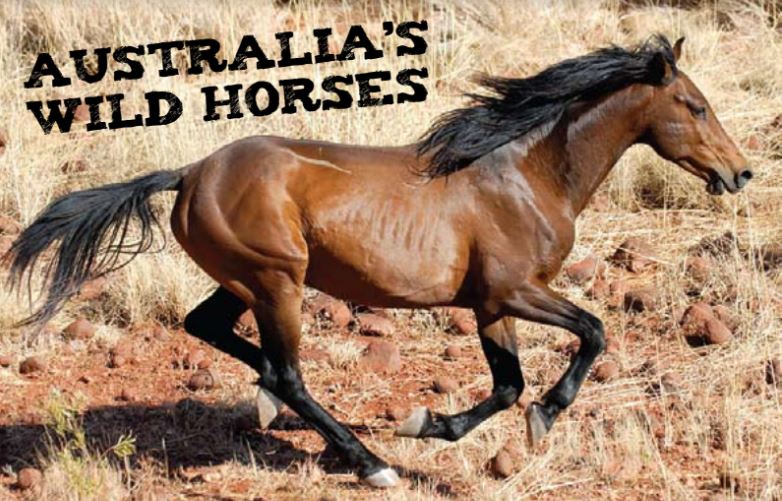
by Jen Clingly
•
16 December 2019
Please enjoy this read by the QLD Uni Brumby Research Unit over the holiday season. May these tough feral horses inspire your horse keeping and hoof care practices and principles. There is so much to be learnt from observation of the wild horse. The Australian Brumby stands out as a mythical, almost romantic icon of Australia. Yet not much is really known about these beautiful, hardy and inherently shy creatures. Brumbies come in every colour and build, usually running in small bands of around 6-10 horses which include the stallion, mares and their young progeny. To find and watch them may mean weeks of hiding at waterholes, walking through deserts, waiting on mountain ridges and even searching for them from the air. Researchers of the Australian Brumby Research Team at The University of Queensland are currently exploring the most remote areas in Australia to find herds of horses that are surviving without human intervention. Capturing these horses on film takes time and patience - wild horses will gallop off at the mere smell of juman scent or a flicker of somthing unfamiliar on the horizon. Young colts leave the band between 1-2 years of age and often run in "bachelor" mobs until they are dominant enough to form bands on their own. It is recorded that fillies will leave the mob when they reach reproductive age and are quickly picked up by another stallion. In Brumby country, everywhere in the desert, there are brumby highways, deep tracks forged by thousands of hooves. These are called "pads". Horses will travel single file slowly from waterholes to grazing country on these pads. Brumbies can walk up to 30km daily between grazing and water. Their hooves are generally tough but vary according to the terrain the horses are running on. Brumbies in sandy country such as thjis may have longer hooves. Brumbies running over rocky country have short hooves, smooth with rounded walls. Brumbies graze and move constantly. Brumbies may drink every day or even every three days depending on the avilability of feed and water. Bands will often enter and leave the water holes quickly. Whilst there they drink thirstily and deeply. Horses on Stations in Queensland and Northern Territory, their habitat can very enormously. View the entire blog and credits here !
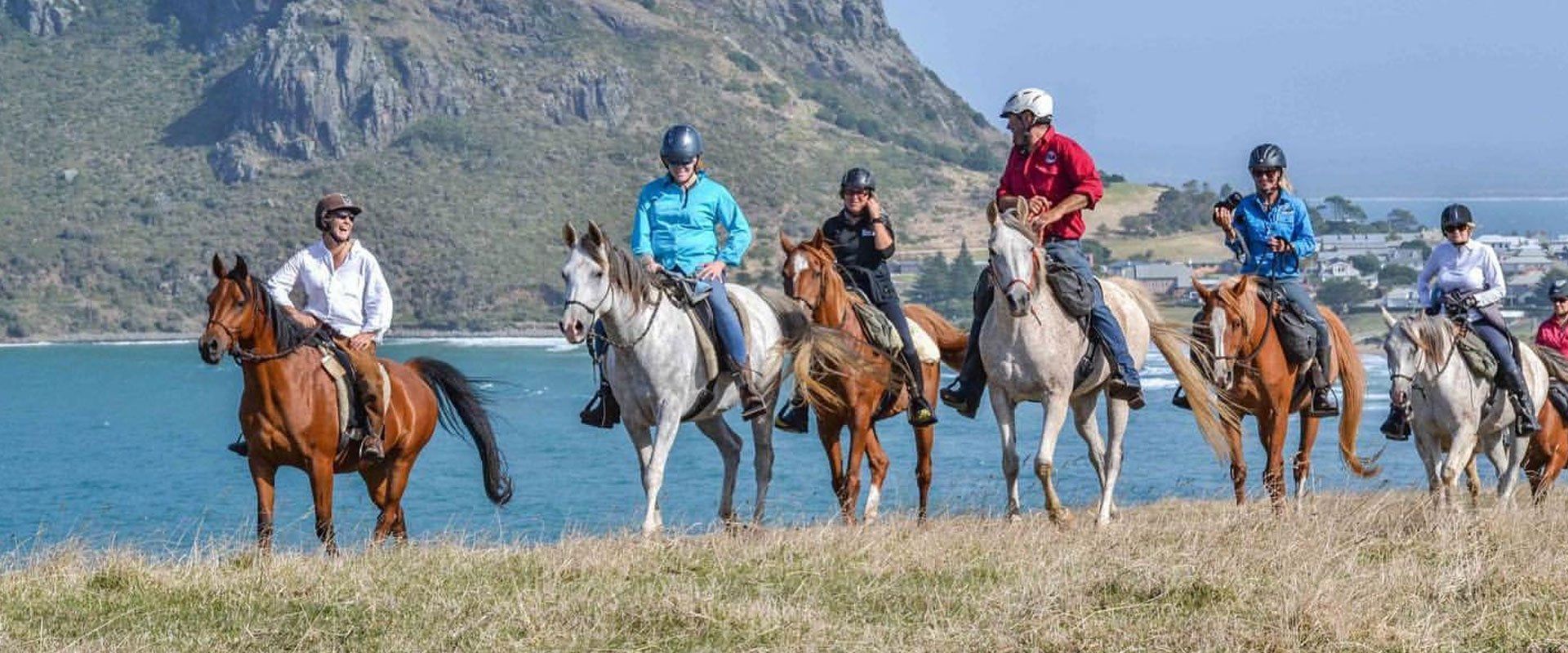
by Wild About Hooves
•
25 July 2019
We are blessed at Australian Horse Adventures to have an extraordinary team of horses in our operation. We have a core group, the “A team” who have been with us since they were young, or were bred by us. They have clocked up thousands of kilometres under saddle with us (trail riding, endurance and stock work) and with whom our whole adventure business evolved. Then joining them, is our team of preloved horses. We are proud and delighted to acquire “hand me down” horses. Usually these horses belonged to friends, who sought a good home and feel their horse would suit a career in tourism. It’s also part of our commitment to minimal impact on the environment. With so much wastage in the horse industry its important to our ethos and be conscious of how we can make a difference. Recycling horses feels right to us. So what do we look for in a horse to join our team? If you check out our website or social media photos you will see we are big fans of Arabian horses. They are stunning horses to look at and so photogenic. They are also much more than a pretty face. Intelligence: Is high on our priority list. When we work with a horse, we want them to have a good dose of “horse sense”. We encourage them to problem solve and make wise decisions. The obstacle course, our bush trails and challenges we create, give us the opportunity to assess if the horses can think through the tasks. To do this, we pay close attention to ensure every request we make when training is understood but we are also respectful of what each horse can offer. We focus on patience, trust and respect. Experience: The less experienced guests we have, the more experienced horse we partner them up with. “Green” riders are teamed up with our “been there, done that” horses. Personality: Our horses are bursting with personality. We look for a horse with personality and let it shine. As trainers and guides we get to know them intimately so that we can read their minds and they need to be able to read ours or respond to our cues. Our horses have their own biographies that describe each horse perfectly. Guests can read through these at the tour induction to get a feel for the individual personalities of our team. We then aim to match horses and guests based on compatible personalities. It makes for a great partnership and a memorable holiday for our guests. Conformation: We look for a balanced horse – it’s the one secret to lifelong soundness and maximum performance. We are asking our team to work for years in training, competition and trail riding, they must be able to withstand the concussion, the distances and demands. Our ultimate challenge is to work with each horse as an individual and recognise what is balance and soundness for each one. With our hoof fetish as hoof care educators, good, strong, healthy, balanced hooves and sure-footed horses are super important to us. We look for good movers, who are efficient with their energy and comfortable to ride. Attitude: Do they want to work with us? And can they work together as a team? It’s the question we ask the horse through observation. The horses in our operation have an amazing work ethic because they enjoy what they do, they love a job, they are willing, courageous, fiercely independent, and fun, they embrace the fitness training and line up in the queue, day after day to join us at work. They build their strength and endurance to be able to take our guests on epic adventures week after week. “A horse is a horse of course” Mr Ed When work finishes, the horses get to do their thing. They live together a herd in a big paddock, they have access to food and water, they roll, they snooze, they get dirty, they are without rugs, without shoes. They are free to go feral. And this works for us and for them. Success with our team lies in letting them be horses and building partnerships not slaves. And it shows with a team who are willing, happy and responsive. We are in constant admiration for what they will do for us. They are super stars. There is no mountain too high, no river too wide, no challenge to tough for our horses. They are what makes Australian Horse Adventures so special and our guests reviews so favourable.

by Wild About Hooves
•
20 October 2018
In our crazy busy lives, it’s easy to forget the power of simplicity. We yearn to just saddle up and go for a ride in a magical place. Horse riding is a powerful cure for an overworked mind, a tired soul and a dormant spirit. When we are so busy hustling and bustling and ticking off this list and moving on to the next thing, we forget to allow ourselves any contentment along the way. We need an all-important RESET and RECHARGE. Australian Horse Adventures, our trail riding business, promise to provide you with the feeling of contentment and joy and to redirect your perspectives by looking after your every little thing on your horse riding holiday so you can just savour and enjoy: Gorgeous safe, fit and educated horses. Horses that are trained to ride bitless and a chance for you to learn about natural horsemanship. Luxurious comfy accommodation with your own private room and ensuite. Mind blowing scenery Delicious healthy fresh food that is renowned in the local region. Imagine juicy seafood straight from the ocean with a chilled Tasmanian white wine, or a cheese platter with a peppery perfect Shiraz from the Barossa, SA. Our tours focus on showcasing the local produce and the culinary “must try” of a location. Photographs are taken for you and provided as a gift at the end of the tour. All you need to do – is come and ride with us. It’s horse time that reminds us fulfillment isn’t felt in all the chaos and goal kicking in our careers and lives. Its magnified in nature, with these beautiful creatures. Check out www.australianhorseadventures.com.au for the range of horseback tours. WE WOULD LOVE TO HAVE YOU JOIN US.
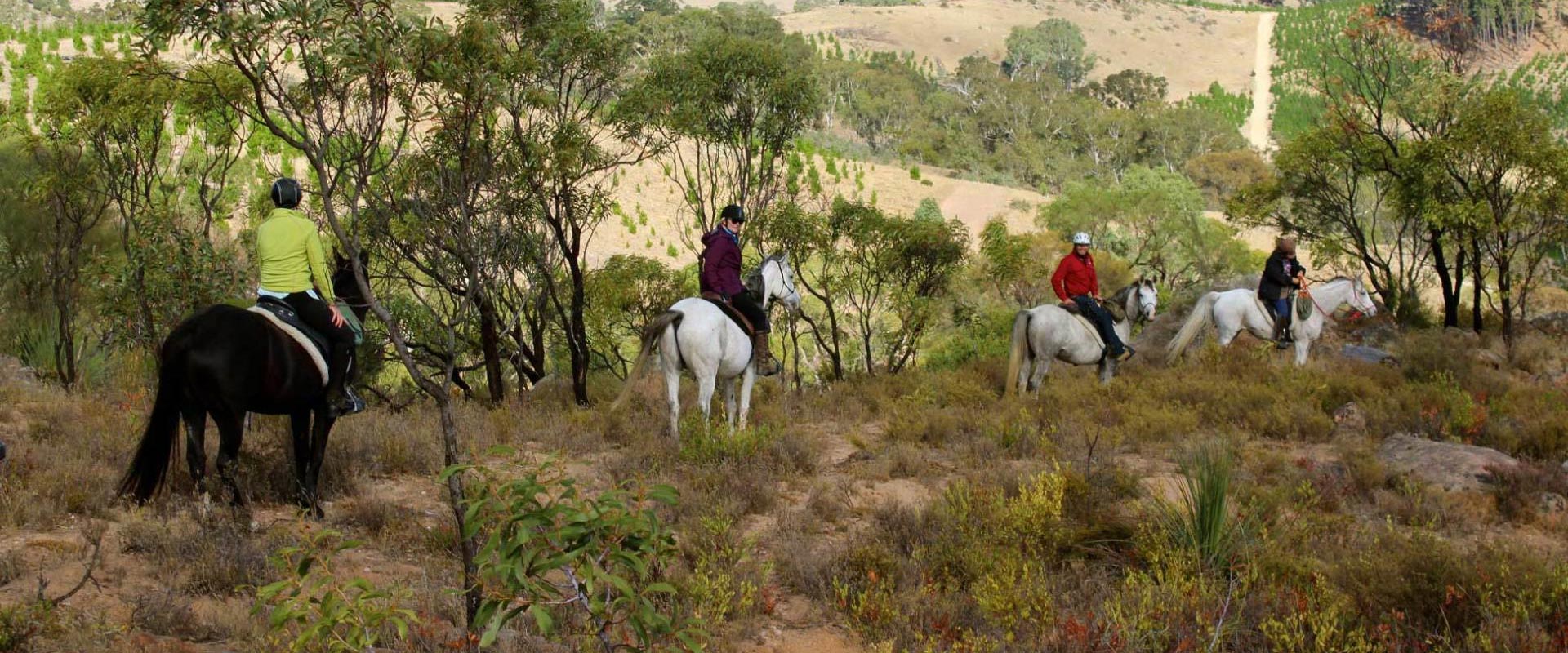
by Wild About Hooves
•
27 July 2017
What an ADVENTURE! Mongolia is the wild west of the east. I cried when I farewelled my Mongolian steed. I wanted to bring him home. These wild eyed, dreadlocked, pocket rockets were the highlight! They carried us 400kms across remote northern Mongolia in true nomadic style, across the steppes, through swollen rivers, mountain passes and rocky trails into swallow-you-whole boggy marshes to the Tsaatan – Reindeer people camped near the Russian border. Then they marched us back to a local Naadam Festival with horse racing, wrestling and archery. Chinggis Khann stated “It’s easy to conquer the world from the back of a horse” and it’s easy to see why. These horses were missiles for this legend in the 13th century. They carried the conquering Mongol warriors across half the world.

by Wild About Hooves
•
7 May 2017
It’s a word that gets your attention, conjuring up an image of a dead horse and its legs being chopped off. It especially gets your attention if you’re going to be meeting one soon—which is what participants of a Wild About Hooves’ Learn to Trim Workshop get to do. It’s part rite of passage, part personal test, but trimming and dissecting cadaver legs is always the subject of anticipation and apprehension. Almost every hoof care student wonders how he or she will react when it’s time to start trimming a dead horse leg. Students are apprehensive to start, in fact some say they don’t want to participate. Jen Clingly, director of Wild About Hooves highlights in her introductory lecture. “This course is a little different – it’s really hands on and we pride ourselves on giving you the practical skills and knowledge to be able to maintain your own horses hooves. But to gain this experience you will be working on a number of cadaver legs. It’s an unusual medium to work with but they offer a great opportunity to hone in your tool skills without getting kicked or bitten or struggling to position yourself comfortably under a live horse. Firstly, all students gain a solid understanding of the distal limb anatomy of the horse, which gives them confidence to trim safely to the landmarks on the hoof . Clingly likes to ask that students acknowledge for a few moments, the horses and to honor their legs for this opportunity to study and learn hoof care. Clingly admits with a smile that her main job of the day is to keep the cadaver legs under control. She bags them to disguise them and to make working on them easier. The bag is taped at the fetlock to allow students to just focus on the hoof. Wild About Hooves trainers guide and supervise students in using the trimming tools, recognising landmarks on the hoof, recognising healthy hooves and recognising pathologies in the hoof. They get started with just cleaning out the cadaver hoof and preparing their trim strategy. With the hoof picks in action, knives and rasps at the ready, the workshop turns into a group of bowed heads and hunched shoulders. Everyone seems focused on the task at hand. Occasionally a head pokes up above the huddle of shoulders with a question for an instructor. As the workshop and afternoon progresses, students became more comfortable and circulate around, examining each other’s cadavers, beginning to get a sense of the biological variation among the horse’s hooves. Sometimes a student will turn white. Sometimes the smell creates disgruntled noises. Adverse reactions to cadavers are hardly unusual. About 5 percent of students experience some sort of emotional upset. “Typically they adjust and they come to grips and are not burdened or troubled by it on a long term basis.” Participants of the workshop have taken the first of many major steps to becoming hoof trimmers. At the end of the day they go home capable and competent to maintain their own horses hooves. Some participants even take home their cadaver leg to show family or friends what they learnt, other students take them home to bury them and dig them up later to make an anatomical bone specimens, others take them as a present for their dogs. But best of all, they accomplish the hard feat (excuse the pun) of trimming a cadaver horse leg.
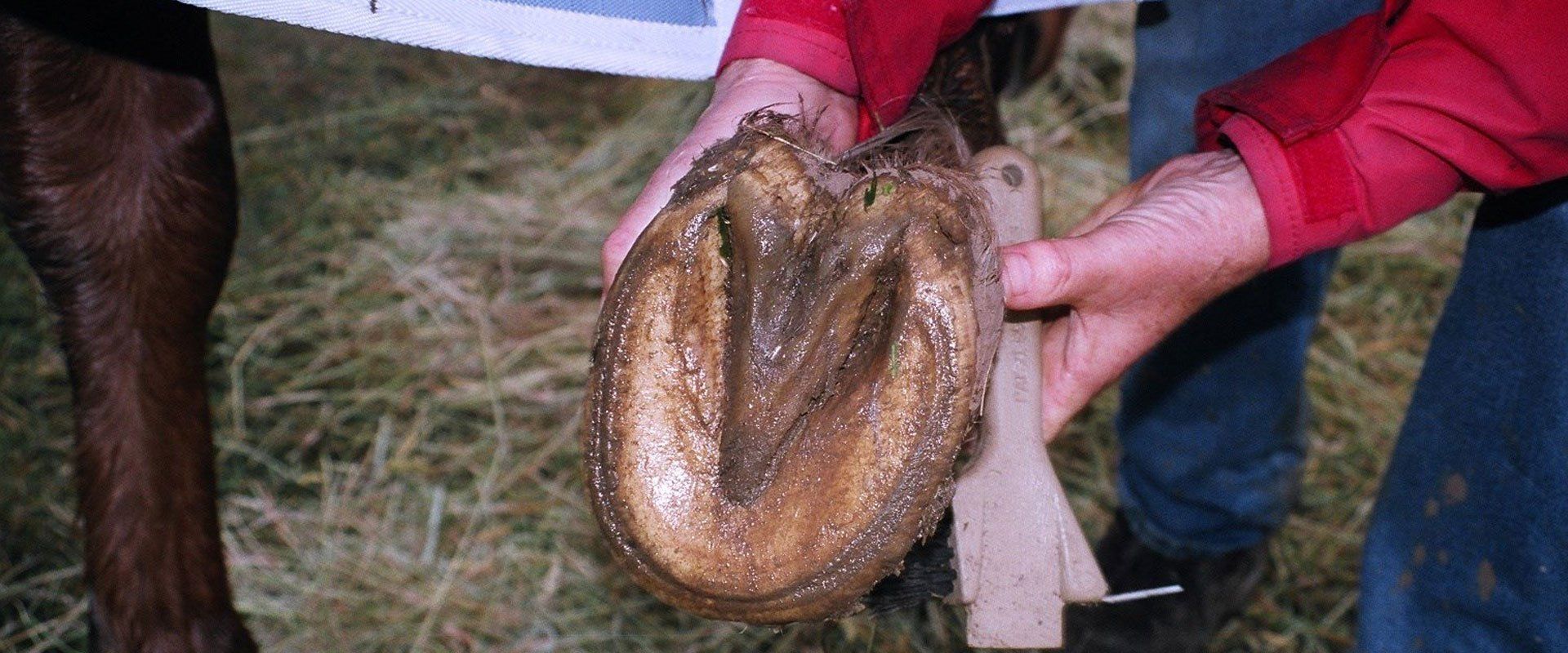
by Wild About Hooves
•
20 April 2017
Soon to be published with photographs and on the newsagent shelves: The Australian Endurance Manual…. NO HOOF, NO HORSE – NO ENDURANCE RIDE! Commiserations to those who have had to postpone their goals and dreams because of a hoof related issue on their endurance horse. Some horse people have a gift for recognizing that something is not right in their horse. Some can pick lameness, some are really talented at identifying those tiny issues in a horse’s giddy-up that most of us don’t even notice — until they develop into something more serious. Not everybody is blessed with special powers so this article is aimed to highlight some common hoof issues that hinder the kilometer crunching success of the ENDURANCE HORSE. The hoof is a window to a horse’s health; like a barometer to gauge what’s going on. It’s a handy skill to be able to learn to read the hoof and pinpoint problems yourself and deal with them before you call your hoof care provider and your vet and hand over your hard won money. DIAGNOSTIC TOOLS YOU CAN USE If you head out to the paddock with your saddle and uh oh your horse is lame, don’t jump straight onto facebook. Take the time to study your equine friend. Your powers of observation and intuition are valuable. 1. Observation – Look for signs of pain. Look at your horse’s eye. This can tell you a lot about his attitude. Watch your horse from a distance. How does it stand? Watch it move. Horses that trip, land toe first, take short strides, forge or display any number of gait abnormalities may be moving this way because of pain. If something is hard to pick up video the horse with the slow motion feature in your phone. Get down at ground level, in this way you can pick up any inconsistencies in foot balance. You may find the horse is landing toe first on one hoof, which could be indicating caudal heel pain. Examples of this are from Thrush or Navicular. The key to picking up abnormal issues is to know what is “normal” for your horse. Then abnormal really jumps out at you. 2. Hoof Assessment – pick up the hooves and examine them carefully. The aim is to evaluate balance, look for symmetry and any abnormalities or pathologies. So how do you access balance in a hoof? There is so much controversy regarding how a healthy hoof is supposed to look but balance is one secret to lifelong soundness and maximum performance. Look for symmetry of the hairline along the coronary band and symmetry of the heel bulbs. In a healthy hoof the hairline slopes in a straight line from the dorsal wall to the heel when viewed from the side. Frog alignment – a healthy frog is broad, level with the heels and usually has a leathery appearance. The frog should be approx. 2/3 length of the hoof. The hoof pastern axis – assess the axis of the hoof in relation to the pastern. Draw an imaginary line through the foot and the pastern parallel to the front of the hoof wall. It should be roughly straight. This “superman vision” method can give you a general idea of bone alignment in the lower limb. Good alignment is important for biomechanical efficiency in the endurance horse. Straight hoof wall is a good indicator of balance and health. A hoof wall should not show flaring or bulging nor be decorated with rings. In a healthy hoof the wall is smooth and often shiny. Medial lateral balance gives you an estimate of how level the pedal bone sits with in the hoof capsule. To assess this stand in front of the horse and look at hoof straight on. Second, look at the hoof from behind. Crouch down to look for balance of the heel bulbs. On a horses with great conformation and balanced hooves this will look symmetrical from both angles. Look at the white line in the hoof? Ideally you want to see a tight white line. Note: it's never white but honey coloured. A white line that is stretched, or stained with blood, has cavities or black spots should set off your “alarm bells” that there is a problem. Look at the sole – good quality sole should be hard and shiny and if you palpate or press on it, it shouldn’t flex. Horses who suffer with thin soles and are tender footed, will have very shallow collateral grooves at the apex of the frog, very little concavity in the hoof and you may be able to flex the sole at the apex of the frog when you press with your thumbs. A plump digital cushion can be a great indicator of a strong, well-developed caudal hoof. Get hands on and feel it. Is it plump like a squash ball or does your horse’s digital cushion feel like a soggy sponge that creates frog movement when you squish it? UNDERSTANDING BALANCE There is no question that strong balanced hooves are one of the most important features of the longevity in an endurance athlete. These horse’s hooves must be able to withstand the continual concussion and pounding sustained during years of training and competition. Hooves that are compromised are not going to cope with the punishment of endurance competition. As outlined above hoof balance is a multidimensional concept and there are many more ways to assess it. The ultimate challenge of good hoof care and maintaining healthy, functional balanced hooves is working with each horse as an individual and recognizing what is balance and soundness for your horse. Back to diagnostic tools we can use…. 3. Palpation: one of the handiest things we have, excuse the pun, are our hands. Feel, poke and prod your horse’s hooves. Feel for heat and swelling. Run your hands down your horses legs to feel the tendons, lateral cartilages and squeeze the digital cushion, palpate along the coronary band. Your horse should not be reactive to this unless you find something out of the ordinary. 4. Feeling the Digital Pulse – This is the best diagnostic tool you can use. It rates highly with your stethoscope and thermometer for monitoring your horse’s vital signs. It’s important to learn where it is and how to feel it. A strong bounding digital pulse is always indicative of inflammation and pain. The most common causes of this are abscessing and laminitis. 5. Use Your Nose – Pathologies in the hoof usually emit a bad smell. Don’t be scared to take a whiff to identify when something is not normal. Thrush, seedy toe, abscesses and infections tend to have a foul stench. RECOGNISING AND TREATING COMMON HOOF PATHOLOGIES Some of the common hoof pathologies an endurance horse suffers: UNBALANCED HOOVES – This happens because most people don’t get their horses shod or trimmed regularly enough. The hoof is continually growing – approximately a 1cm a month. Often on an endurance horse the rate of growth is a lot faster because they are in work. Movement stimulates growth. Ideally a horse should be shod every 3 to 4 weeks. So the negatives with unbalanced hooves is they begin to distort. Long toes, under run heels, upright hooves, contracted heels, flaring hoof walls, medial lateral imbalances. These can progress to biomechanical changes and body issues. Carl ODwyer, one of Australia’s renowned farriers and shoe manufacturers offers strong advice to owners to give horses some time out of shoes, “Horses need time without shoes to heal from the damage that metal shoes can cause.” HOOF RINGS In a well managed horse with its workload, nutrition, minerals and lifestyle all in harmony, the hoof wall should be smooth with no distortions. A common warning sign of internal dysfunction is wavy growth rings. These ridges offer important clues. Based on hoof growth of approximately 1 cm a month from the coronary band, you can estimate when the stress occurred. Any rings in the face of the hoof wall is an indication of change. This could represent a change in the horses lifestyle, workload, environment, diet, travel, seasonal and weather changes and even the result of the last endurance ride. If the rings are coupled with a stretched white line is a sign it has suffered from laminitis. HORIZONTAL CRACKS In the Hoof Wall – These rings indicate an inflammation from too much concussion. This is a big issue that faces endurance horse and in severe cases will grow down with a yawning cavity. These changes warrant radiographs to determine if there is underlying problems in the pedal bone. It highlights the hoof needs more shock absorption properties to withstand concussive rides so consider riding with pads or hoof boots. SEEDY TOE – WHITE LINE DISEASE (Different Name, Same Thing) This bacteria or fungi looks for a little cavity or separation in the white line or laminae and then proceeds to party and proliferate. Initially this does not cause lameness because it involves the insensitive tissues. But lameness can occur when muck packs into the crevice and results in an infection. Lameness also occurs when the ground forces cause the disconnected wall to flare out and tear the sensitive tissues. In bad cases it can spread from the toe to the coronary band. Seedy toe has the appearance of black paste or is sometimes crumbly grey muck. If you excavate the hole it can be tiny to huge depending on how long it has been left untreated. HOW TO TREAT Excavate the muck out and chase every bit of the black out. Treat with antifungal applications The only way to resolve the problem is to grow down a better connected hoof capsule and this will most likely mean you revisit your feed regime to include a balanced mineral plan. First step with hoof care, is to trim the wall back and apply a beveled edge. This may be enough to grow the infected wall out. If it fails to improve, then it may be necessary to perform a resection and expose it to the air. Treating agents are numerous. Tea-tree oil, iodine, watered down bleach or copper sulphate or apple cider vinegar in a spray bottle If it’s difficult for you to treat daily, pack the crevice with a blend of copper sulfate crystals and Vaseline. Jam it in with cotton balls using your hoof pick. Seedy toe should not be ignored! It is also possible for stones to lodge in these holes, and contrary to popular belief these are an effect of the stretched white line not a cause. It’s not possible for stones and debris to penetrate a healthy tight white line, because when the laminae connection is healthy, it is tightly bonded to the internal structure and there are no holes. Once seedy toe has invaded the hoof, the horse will be at greater risk of suffering from abscesses. The cavities can be an easy route via which infection can attack. HOOF ABSCESSING The classic signs your horse is suffering with an abscess is lameness, pointing one hoof, unwilling to weight load the hoof, a bounding digital pulse and heat in that hoof. They are extremely painful for the horse. Sometimes your horse may be mildly lame on and off for sometime before the abscess becomes acute. Sometimes the lower leg will swell severely giving the impression your horse has broken his leg. But in any case it’s the “thumbs down -no go” for showing up at the endurance event that weekend. Abscesses can develop from bruising and trauma to the sole, from a nail puncture, seedy toe infection or through separation at the white line. As dirt and manure pack into the defect, infection develops. Pressure from the buildup of pus beneath the wall causes the pain and lameness. They are particularly common following periods of wet weather. Abscesses can blow out at the sole, called a subsolar abscess or they follow the track of least resistance and pop out at the heel bulb or along the coronary band. Once the pressure is relieved lameness immediately subsides. IDENTIFYING WHERE AN ABSCESS IS BREWING It is sometimes possible to identify a smoldering abscess by palpating along the heel bulbs and coronary band to elicit a reaction from your horse. They will be certain to let you know when it’s sore to poke. Similarly, if you investigate the sole and use the end of your hoof pick to push around you may source the “spot.” Identification of the exact location of a subsolar abscess allows a veterinarian to pare it out from the bottom of the sole before the infection migrates through the soft tissues of the foot. A word of warning: trying to relieve an abscess by digging holes in the sole is effective if you can pinpoint exactly where it lies but it can risk opening up routes for further bacterial infection and the subsequent down time for recovery is a lot longer than if your horse releases it naturally with the help of a poultice. HOW TO TREAT: Movement is vital for an abscess to exit as quickly as possible so don’t confine your horse. Let him out with his herd buddies and the movement helps prevent swelling of the lower leg. A brewing hoof abscess responds well to hoof soaks in Epsom Salts or with a Poultice of Epsom salts. Poultice kits can be sourced or can be made simply with a plastic shopping bag, duct tape, cotton wool or nappy and epsom salts and water. (PHOTO) YouTube Footage: to make a hoof poultice: http://www.youtube.com/watch?v=AyI_1jmaVo0 You can rely on your detective nose to recognize when the abscess has burst. It smells disgusting. Apply another poultice to protect the abscess hole from dirt and manure. It will also encourage the abscess to drain. If an abscess bursts around the coronary band, this will grow out as a defect in the hoof wall. Subsolar abscess can result in the sole coming away or separating which can freak people out. Its best to leave as much of the old sole to protect the tender new sole underneath. THRUSH (Photo) If your horse is sensitive in the central sulcus of the frog and you can smell or see a stinking black discharge, it may well have a thrush infection. Your nose can also confirm a thrush infection. It stinks! Equine thrush is caused by anaerobic bacteria (living without oxygen) that, when trapped in moisture, can create an infection that slowly eats away at the horse’s hoof tissue, particularly the frog area. Most of the time this will create some mild discomfort, but as long as it is addressed quickly it rarely does anything more. If thrush is untreated, it can eventually make its way into the sensitive areas of the frog invading and even bifurcating the digital cushion deep inside. Thrush has the potential to cause a change in the horse’s biomechanics. Pain from the back of the hoof causes the horse to land on its toes and if this continues it can have a devastating impact on the Navicular region within the hoof capsule. Thrush results from moist and unhygienic conditions. A horse standing in manure, rotten hay or mud encourages it to thrive. HOW TO TREAT Thrush is preventable with good hygiene. Pick out the hooves daily.Medicate the bottom of hoof with something that kills bacteria- this needs to be done daily. Iodine, copper sulphate products or do a daily soak of Lysol concentrate (mix as per directions) or an Apple cider vinegar soak. (The picture to the right is the left fore hoof of a horse showing central sulcus thrush evidenced by the deep crevice between the heel bulbs, and also along one of the collateral grooves. PHOTO) For Thrush in the deep central sulcus of the frog, use an antibacterial hand wipe and clean out the crevice using the same action as you would using dental floss. You can then pour iodine and plug the crevice with cotton wool. Check out footage on the Wild about Hooves Facebook page on treating thrush. It’s easy. But you must be diligent. Other successful strategies include This is a 50/50 combination of Triple Antibiotic Ointment and Athlete's Foot Cream in a catheter tip syringe squeezed into the central sulcus. Warning: Do not tolerate deep crevices in the frog sulcus! If you lose sight of your hoof pick up there – this is a concern. Battling thrush is a two pronged approach. Antifungal treatments are important but the second essential is to improve hoof health. Provide you horse stimulating well drained environments to live. If your horse lives in wet climates they need time on dry ground. Providing the correct diet and mineral balance will encourage healthy hoof growth and immunity. NOTE TO YOURSELF: Horse owners rarely give themselves enough credit for their own intuition. The time you spend with your horse clocking up the kilometres, you know better than anyone when your horse doesn’t feel right. LISTEN TO YOUR HORSE Take responsibility for educating yourself on good hoof care. The more you learn the better equipped you are to make decisions for your horse. Hoof issues can be avoided by being in tune and getting onto problems before they become a serious set back. After all, no hoof, no horse, no ride.
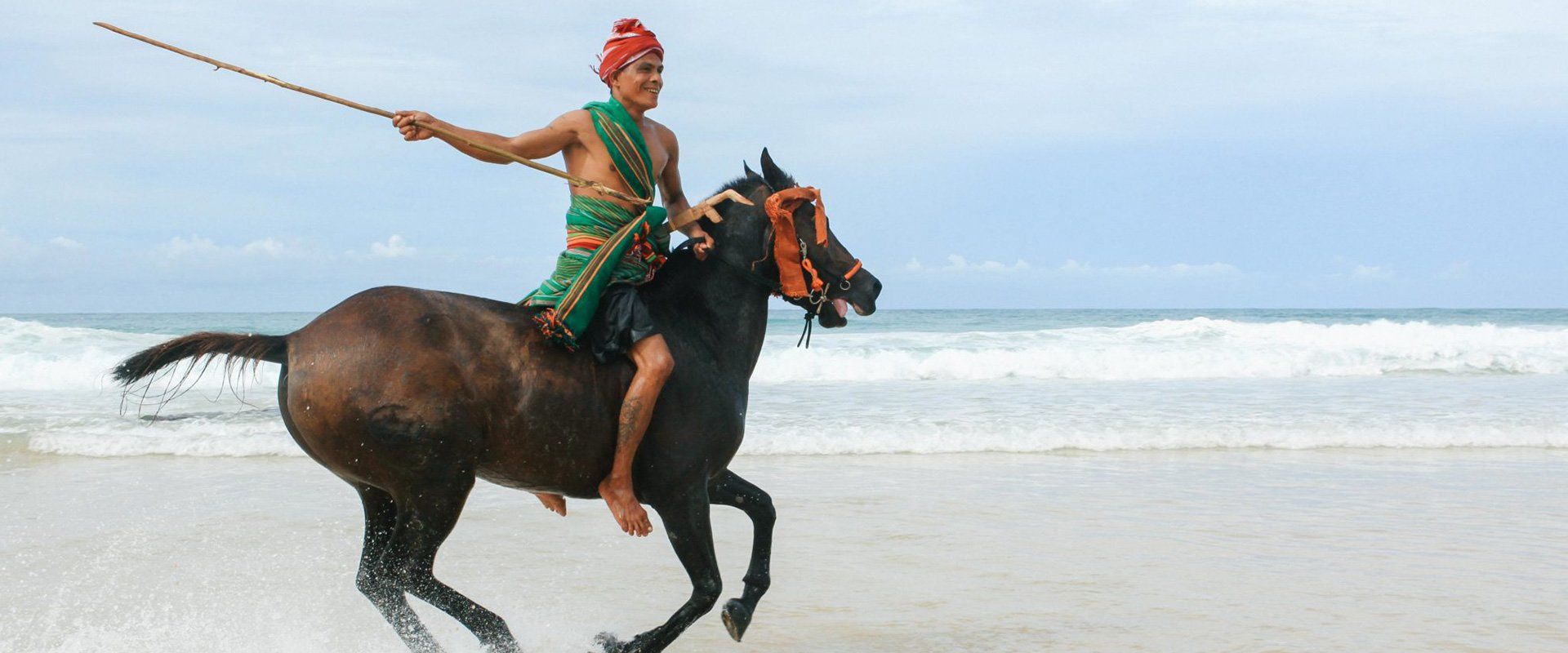
by Wild About Hooves
•
25 January 2017
Our role as hoof care educators and horse lovers certainly takes us to far away locations. Our aim is to inspire education, and create a world wide ripple effect of hoof care and horse keeping awesomeness. Inevitably we are always on the move responding to demand Australia wide for workshops in hoof care. Business has also seen us travel abroad, teaching hoof care workshops around New Zealand, lecturing to Vets & Farriers in Japan at Tokyo University, pulling shoes & fitting out a tourism team in hoof boots in Bali and teaching workshops to the local Indonesian Vets. Travel is an Adventure. Real adventure – to us, is a willingness to jump out of our comfort zone, to be self-motivated, but self less, to test our endurance and be adaptable and ever ready to embrace the moment. There is no doubt its often risky – travelling forces you to have firsthand encounters with the world. The world the way it is, not the way we imagine it. We are pinching ourselves about our latest adventure in hoof care, just to see if it really happened. We went to the remote Indonesian island of Sumba. A place we couldn’t even locate on our world globe. A place that seemed to have missed time. A place that seemed like it was straight out of the movie set of Tarzan. We ventured forth with www.globetrotting.com.au to road-test a horse ride at the “world's best” resort, Nihiwatu and we were keen to meet the tropical, tough-nut Sumba ponies who are at the core of Sumba culture. SUMBA is as pure, basic and original as you can get. We got to experience the ancient culture, primitive villages and mind boggling traditions edged by the stunning beaches, sprawling rainforest and “knock you dead” resort comforts. A real juxtaposition for our senses. The locals live a simple lifestyle that is hard for us to comprehend. Let me tell you about our draw card to the island, the Sumbanese Pony. These hard little ponies have a “bring it on” attitude, descended from Mongolia who are revered on the island and a sign of wealth to their villagers. They are still a main mode of transport, a dowry for weddings, and a sympathy gift to grieving families at funerals. These horses were so prized by early colonial powers in fighting their wars that the Navy had special ships built to buy and transport Sumba horses. They were paid for in gold sovereigns, which were melted down and fashioned into jewelry and ritual ornaments, which are still about today. I wonder what my Dad would have considered my worth in Sumba ponies on the eve of my wedding to Jeremy. I trust he would have requested a herd. Anyways, the Sumba pony HOOVES that we saw, were a sight to behold. Hoof porn for the hoof enthusiast or as the Indonesians say, “Bagus” meaning good, beautiful, dandy, or exemplary. We were not surprised to see they are naturally worn, tough and compact and capable of tackling all terrain. They even sounded like coconuts on the pavement, concaved, balanced and rhythmic. Just as you would imagine on a hardy wild horse. On our adventure exploring Sumba, our fine Nihiwatu based steeds charged us through rice paddies, slippery mud slopes of rainforest, past mud wallowing buffalos, busy chickens, barking dog packs, grunting pigs, through villages of laughing children and betel nut chewing adults. They marched through the surf with not a care in the world as waves crashed on them. They endured my squeals of delight and my screams of terror. They showcased their extraordinary island and the islands culture from their sturdy backs. “Travel does what good novelists also do to the life of everyday, placing it like a picture in a frame or a gem in its setting, so that the intrinsic qualities are made more clear. Travel does this with the very stuff that everyday life is made of, giving to it the sharp contour and meaning of art.” – Freya Stark Their relaxed island mentality was contagious. As we sipped on cocktails at the bar at sunset we gained a greater appreciation of just what a world they wanted us to slip into. A grand life of simplicity, with no complication of rules, law, technology, time pressures, but ever ready to slip into colorful costumes and take their place on the battlefield. On the topic of warfare, the most spectacular ritual of the Sumba culture is the PASOLA. It is a contest where hundreds of warriors on horseback fight opposing tribes with wooden spears. These horsemen are highly skilled at riding fast and hurling a spear at the same time. They can throw a spear with the greatest of accuracy and cause not only injury but also death to each other. The primary purpose of the Pasola is blood shed. I know, I know, this is pure madness in our western society. According to ancient beliefs, the spilled blood, will fertilize the land and result in a bountiful harvest. Any bloodshed including animal sacrifices or men wounded or killed during the Pasola is considered to be a symbol of future prosperity. What’s crazy about the date of the Pasola Festival is that it is not set in concrete calendar terms. The date differs each year according to the moon and the arrival of worms! When the Nyale worms spawn on the beaches, this is the sign for the Marupu Priests to announce the time of the Passola – that is, seven nights after the full moon. So folks keen to be amongst this festival, you need to be slightly impulsive in the month of February. www.globetrotting.com.au will bring international awareness to Sumba. Riding on horse back breaks down all cultural barriers and the world can be viewed so very differently from between the ears of a horse. The Sumba pony will show and share its island culture to anyone with a mind open enough. It's time to get there now, places like this are fast vanishing from the world.
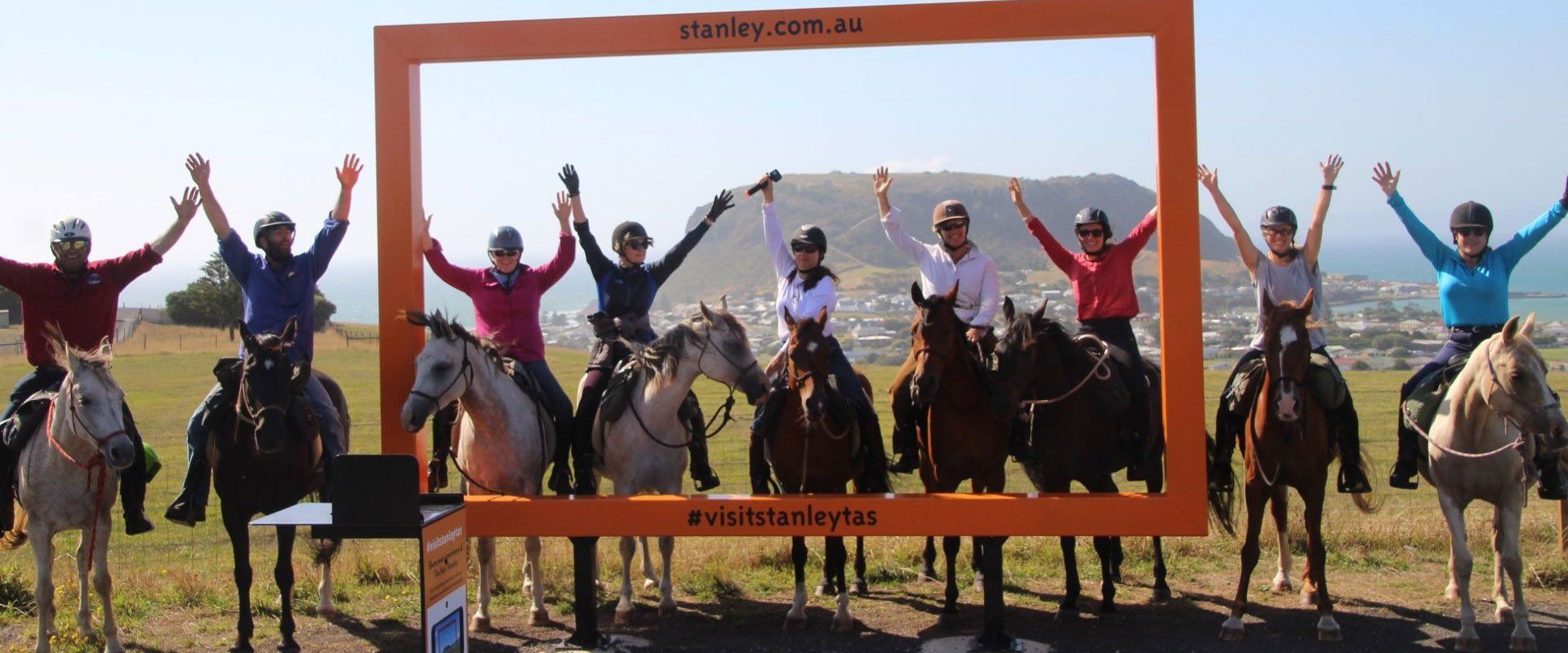
by Wild About Hooves
•
22 December 2016
Are we becoming Farriers? The extraordinary relationship between humans and the horse has been running since well before the birth of Christ. Indeed there is evidence our domestication of horses goes as far back as 3500 BC. And ever since we recognised the utilitarian value of the horse; there has been the horseshoe. The use of horseshoes has become an almost unquestioned tradition. Humans have been nailing shoes onto horses’ hooves for well over a thousand years. Who can remember back to a time otherwise? In this day and age, why do we continue to use metal shoes and now newer, higher tech composite versions nailed on horse’s hooves? Is it to the detriment or benefit of the horse or benefit to the human? Why our allegiance with traditional practices? To fully understand this debate, we need to delve back into the history books to see why our ancestors deemed it necessary to shoe their horses. The precise historical origins of shoeing remain unclear but current research suggests that as early as 500BC, the early Mongolians put primitive boots made of animal hide and woven plant material onto their horses. Around 100AD the Romans, inventors of the first paved roads, created the ‘hipposandal’ similar to the sandals they wore themselves, made of leather and iron and attached to the hoof by straps. These early boots would almost certainly have been used to prevent soreness and the rapid wear of the hoof due to the increased work- loads that the horses of the time would have been placed under. Travelling to the colder and wetter climes of Europe, horses would have suffered a new problem. A combination of the natural porosity of the hoof, consistently wet ground and poor stabling in its’ own waste, would have overly softened the hoof leading to soundness disorders. Horses had become as indispensable as the car is to us now. Owners needed them to be serviceable at all times. Strap on boots in the materials available at the time wouldn’t have lasted very long. A more secure and reliable shoe was needed. Enter the ‘modern’ nailed horseshoe. Around 600AD the first nailed horseshoes were made of soft brass, eventually giving way to the by now, increasingly plentiful iron. By the time of the Crusades, no self-respecting Knight going into battle would be seen without them. Hot horseshoeing became popular in Europe in the 16th century as a means of quickly bedding a shoe into the hoof. Apart from the more recent lightweight aluminum versions used in racing, the horseshoes’ design has changed very little in the last 1400 years So if a nailed on shoe allows the hoof to last longer, provide more grip, prevent soreness and has the added bonus of helping you win the odd battle, why was there an advocate for change? This was based on the growing evidence, backed by anecdotal and reasonable scientific fact that nailed on shoes have the potential to cause considerable harm to a horse. Horseshoes do damage. With negative physical changes to the hoof and body. Change was based on the fact that times were different. With the advent of the internal combustion engine and mechanization, the horse has been relegated from indispensable beast of burden and essential mode of transport to one of almost purely, sporting pleasure. Probably much to the appreciation of many a horse. Change was also based on increased knowledge, observation of wild horses and a fundamental social awareness of “animal welfare”. The horse now had “intrinsic” value rather than utilitarian. They no longer pull vast loads in carts and the last armored knights haven’t been seen since the middle-ages. Save perhaps for the odd Hollywood epic. In fact most horses are kept, destined for a life in paddocks. Their hooves barely ever getting a chance of being worn down on man made roads. So there has been a growing movement both here and overseas to see a return to barefoot horses through the promotion of ‘natural hoof-care’. Natural hoof care gains its’ inspiration from the wild horse. Like the Australian brumby, the American mustangs, the wild ponies of Mongolia, even the humble Zebra. All run freely and without pain over the roughest of terrains without the need for any hoof protection. Hoof disorders that plague their domestic cousins are virtually unknown to them Jeremy Ford of Wild About Hooves has been a conventional farrier. As part of his job he had come into contact with wild brumbies in the outback of Northern Territory. What astonished him was the amazing condition of their hooves, the distances they were travelling for food and water. Not a shoe in sight. So can our domestic horse be trimmed to emulate the natural wear of the wild? Yes it can! Ford attended a hoof care clinic run by American farrier, Pete Ramey. “It got me thinking. Shoes seemed so unnecessary. What the old farriers in the game told me about founder, softness, wear, bruising – the information at the clinic turned it all on its head. I’m now a professional hoof trimmer and have been for the past 15 years. I have hung up my hammer, stored the anvil and have a great business specializing in natural hoof care and education” When describing the evolution of his business, Ford notes “The bonus is – because the owner can now take responsibility of their horse’s hooves, especially with increased education, they get a much better rapport with their horse and take more responsibility for their horse’s wellbeing”. Owner’s interest in their horse’s hooves has escalated exponentially in the last 20 years. This now means Farrier Schools and Magazines are encouraging the Farriers to embrace and work with the barefoot clientele and recognize them as a growing segment of the equine owning population. To not, means they lose a market share and missed economic opportunities. Farriers are skilled with the tools; some keen to evolve with the times and learn the technique and principles of the natural trim, and gain an understanding of the myriad of hoof boots. But what is truly interesting, is that whilst Natural hoof care is becoming more mainstream there is a new emerging market returning to shoeing with composite shoes under various new labels within the “barefoot” realm. Composite shoes are headlining the hoof care industry for performance and rehabilitation. Therefore, are we evolving or just going full circle? Is history repeating itself as we increase reliance on using hoof protection on horses – plastic, poly or the metal kind? The horse in our day and age has so much at their fingertips. It begs the question – why are we returning to shoes? Are we going back to shoes because of poor trimmers? Is the shoe just used as a band-aid? Are the poor sedentary, obese lifestyles of our horses not unlike our own – causing poor hooves? Are we not following through with the underlying principle of the “natural horse”? There seems to be diametrically opposed philosophies with individual practitioners and how they view their role in the hoof care realm. Some are driven by tradition; others on instinct or gut feel following a “deep green” philosophy, and others simply by what they see as common sense. The reliance on metal, plastic or composite shoes – is in direct contrast to the philosophies held by the “pure” natural hoof care practitioners. If we look at the human health industry, few folks rely on alternative medical practitioners. We no longer let healing run its course, we are too impatient. We dislike having to take responsibility for our longer term health if there is an easier fix that requires less effort. If we have the flu, we shuffle to the doctor which will almost always guarantee a course of antibiotics. If we think we can take a multivitamin versus making the effort of changing our diets, we pop a pill. Dr Neal Valk, US Veterinary Surgeon and Natural Hoof Care Practitioner draws a parallel “We live in an age where people want a pill to treat for type 2 diabetes, not a menu or an exercise program.” Natural Hoof care is based on the premise of a holistic approach for the horse: its environment, its diet, it exercise and ability to move, the capabilities of healthy, sound bare hooves, how to recognize damage already done to the hoof and where possible, respect its natural ability to heal. If the typical horse owner needs to rehabilitate their much loved steed, just as they would their own child, they want a quick fix, anxious for results. Our current “instant gratification” society does not allow for Doctor Time in the paddock, for rehabilitation and healing to take place. However, it is the horse owner, the client, that governs the hoof care industry. Decisions are made on capitalist driven marketing, the rules and regulations of equine events and most importantly, peer pressure. Humans are social creatures who need to follow others to belong. And we now see that natural hoof care practitioners are filling their tool boxes with shoes for instant fixes, the latest gadgets and gizmos and prepped with a sales spiel whilst perhaps not looking at the long term picture. There is growing dissension afoot. From the paddocks of the well-heeled thoroughbreds to the humblest pony club, bold voices are asking questions. Is the natural hoof care industry becoming so large and competitive that it has lost it’s original purpose? Is it possible, in this era of fast paced lifestyles and owners with expectations to be at the next equine event, cannot allow the time it takes for natural hoof care to succeed? Is hoof care merging or will the barefoot versus shod camp segregate further? Are natural hoof care practitioners just becoming farriers? If natural hoof care practitioners truly believe that nailing on horseshoes is detrimental to the long term soundness and welfare of horses then “history shows us that the only time the cycles of suffering, cycles of inherited thinking are broken – is when someone has the courage to take a stand and say in a loud clear voice, ‘we are better than this’”. Wise words quoted from Lyn White, Australia’s foremost animal activist.
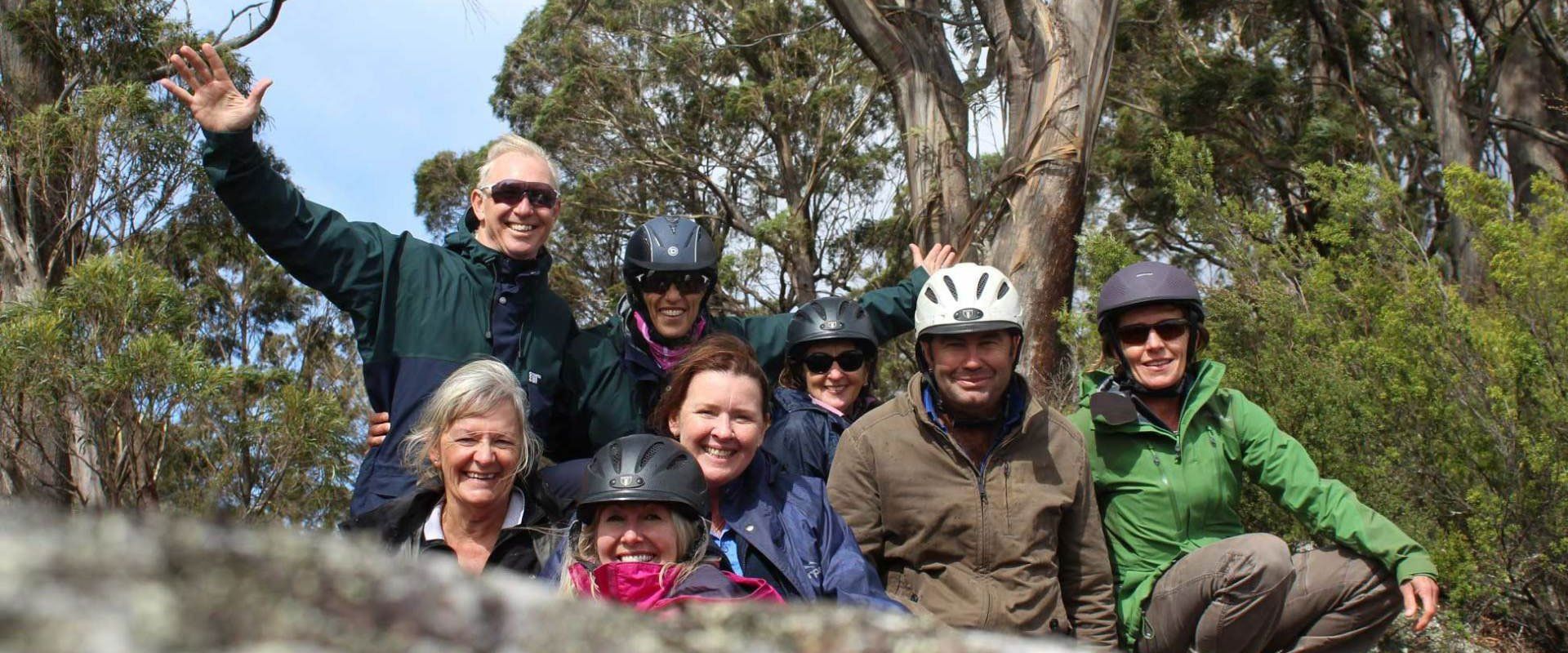
by Wild About Hooves
•
14 September 2016
“Look deep into nature, and then you will understand everything better.” Albert Einstein This quote resonates strongly with the culture of our business, Wild About Hooves. Anytime we are talking or teaching hoof care, horse keeping or horsemanship, we have the wild horse in the back of our mind. They provide the key to understanding horse psychology, a blueprint or map for hoof care and horse husbandry practices for our domestic horses. There is so much to be learnt from observing wild horses. We are in awe of our Australian outback brumbies, their naturally shaped hooves that are capable of withstanding the toughest terrain, the food they source and survive on, the distances they will travel for water, the harsh environments they inhabit and the constant movement. A documentary well worth viewing is The Desert Brumby by Professor Chris Pollitt of Queensland University. Pollitt is clearly awed by the ability of the desert brumby to “travel vast distances between food and water” and in “one of the most hostile environments a horse can find itself in.” Their hooves are “tough and hard” – “this is the gift evolution has given the horses, an ever growing hoof that can accommodate wear and tear yet stay hard and tough and allow horses to make incredible journeys every day of their lives” Horse enthusiasts should never turn down the opportunity to study wild horses. To really study them in their natural environment. The knowledge they provide is the “holy grail” to horse keeping, hoof care and horsemanship. This documentary DVD can be sourced via our online shop and you can find more information about our Wild Horse Adventure Tour. This guided 3 day tour heads outback of Australia every year to observe Brumbies in their natural environment. Dates for next year. June 3rd – 5th 2017. Book early to secure one of the limited seats.
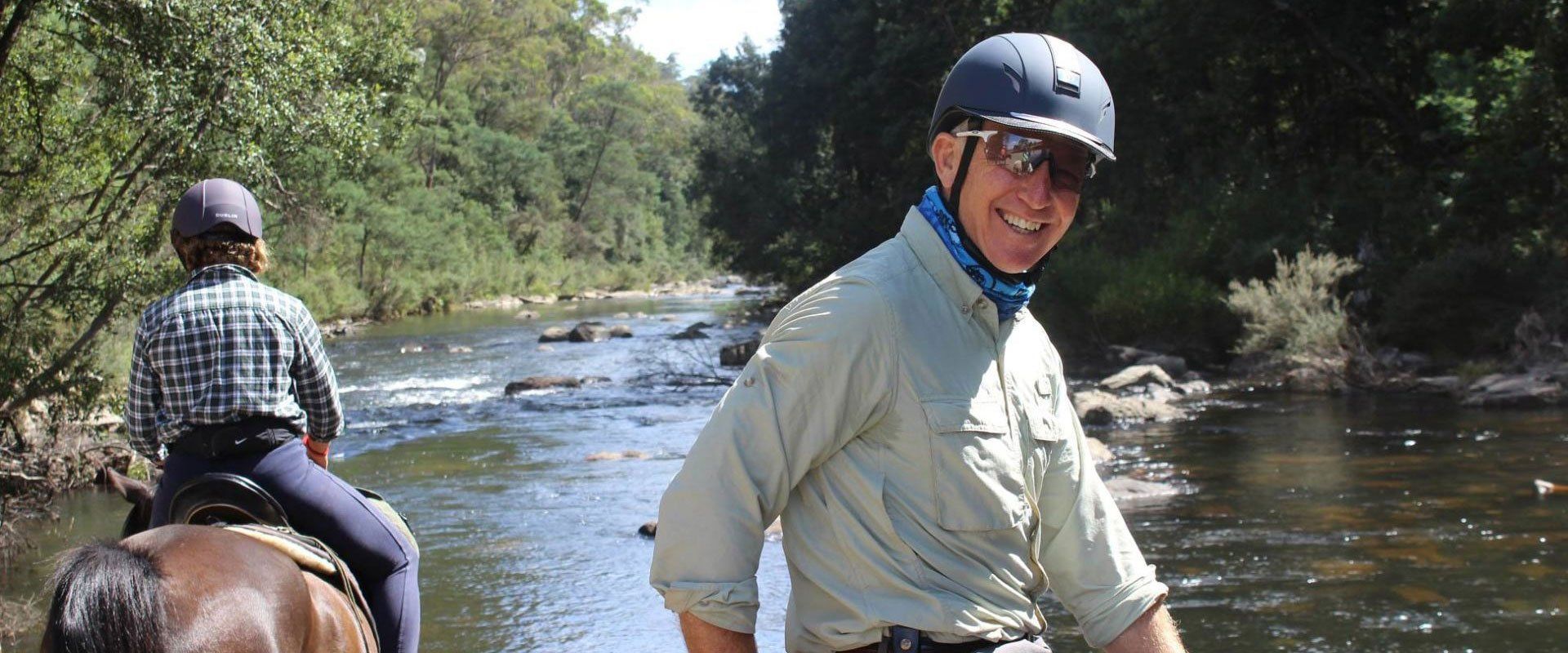
by Wild About Hooves
•
14 June 2016
THRUSH IN THE FROG . If your horse is sensitive in the central sulcus of its frog or you can smell or see a stinking black discharge, it may well have a thrush infection. Thrush has the potential to cause a change in the horses biomechanics. pain from the infection in the back of the hoof causes the horse to land on its toes and if this continues it can have a devastating impact on the navicular region within the hoof capsule. Learning to recognise and treat common hoof pathologies is taught at our workshops check our education & clinic page for a workshop date near you.
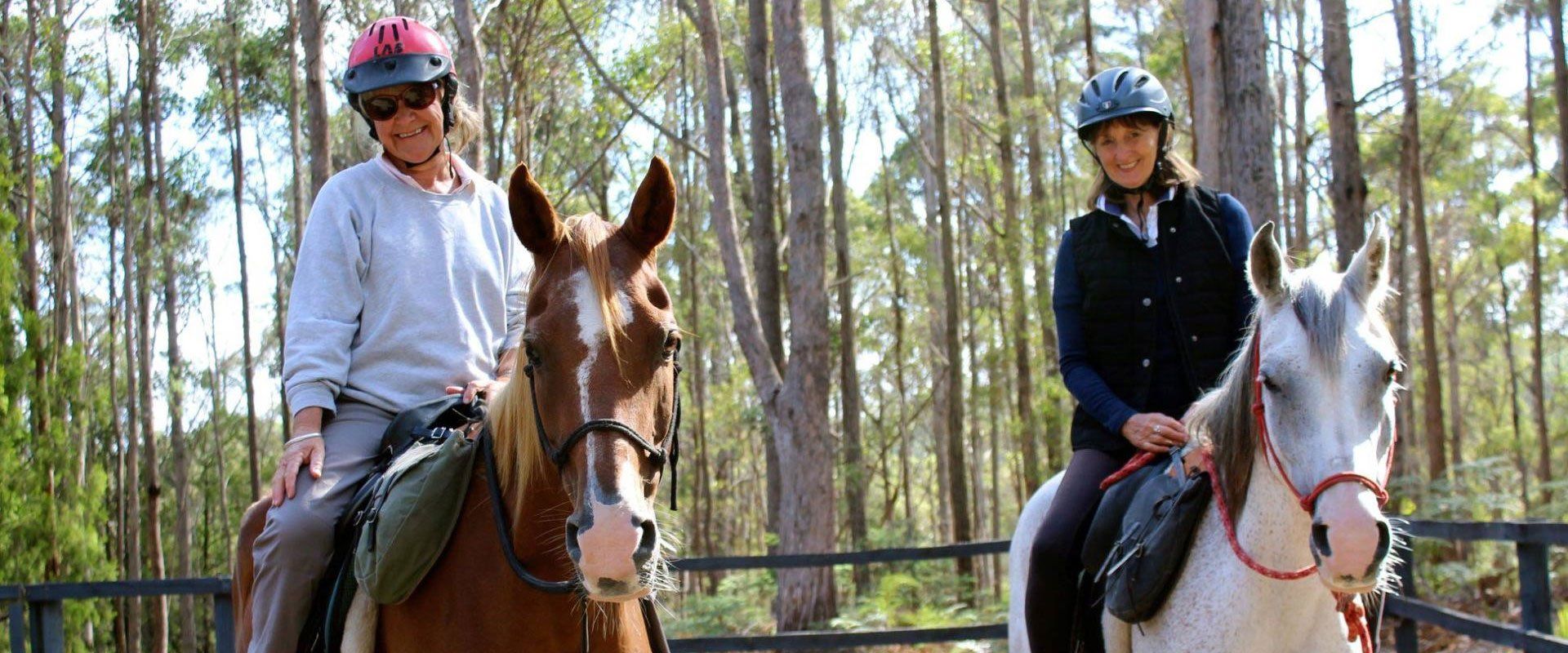
by Wild About Hooves
•
23 May 2016
The human eye cannot see the fraction of a second in which a hoof lands. But the “slow motion” feature on the new mobile phones certainly helps. Ideally, this should be heel first as in super model Colt 45. As opposed to the footage of the grey horse landing toe first. That horse is bio-mechanically challenged, suffering thrush and body work issues. www.wildabouthooves.com.au – join our educational workshops to learn more about hoof care and housekeeping.
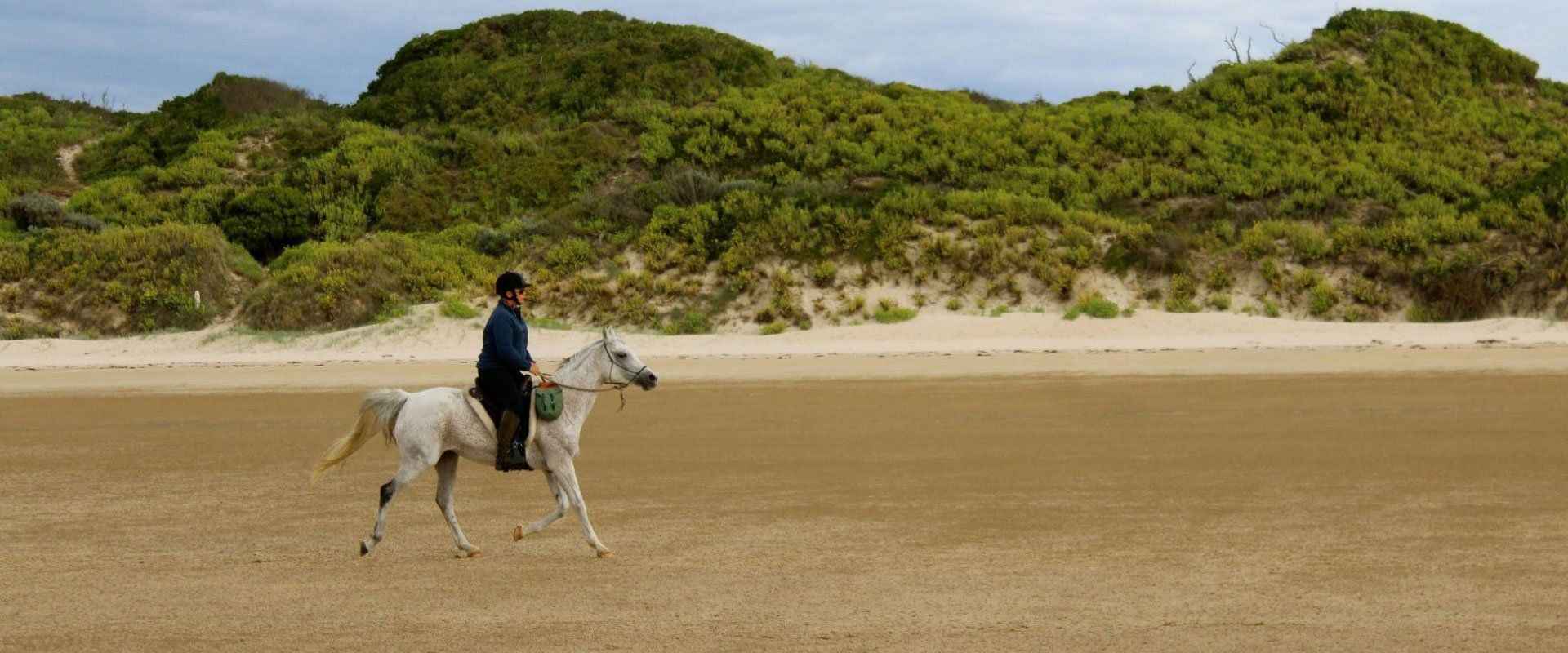
by Wild About Hooves
•
20 April 2016
PETE RAMEY HEADING DOWN UNDER! The Australian Certified Equine Hoof Care Practitioners ( www.australianhooftrimmers.com ) are bouncing like kangaroos, excited to announce that hoof rehabilitation specialist, author and educator, Pete Ramey is running a series of clinics in AUSTRALIA. Pete Ramey’s two day hoof rehabilitation clinics are focusing on growing a healthier hoof and how to unlock the tremendous healing powers in the horse. An American Farrier, Pete has been studying horses hooves for 20 years. He has written the popular book, Making Natural Hoof Care Work for You and numerous papers but his latest text, Care and Rehabilitation of the Equine Foot offers practical instruction for the Equine Veterinarian, Farrier and Trimmer. What’s brilliant about Pete’s Clinics are they are field based, “under the horse” demonstrations and presentations. He details the internal anatomy and development of the hoof, Caudal Hoof Pain and Laminitis treatments plus help and advice for countless other hoof problems. “We are so fortunate in Australia to have the caliber of Ramey’s work and study presented to us. It's not to be missed. He is a dynamic presenter and his hands-on practical approach is the reason his clinics sell out fast.” Jeremy Ford, principal lecturer of the nationally recognized certificate in Equine Hoof Care. Melbourne, Victoria Date: OCTOBER 15th & 16th – SOLD OUT SORRY Northern Tasmania Date: OCTOBER 22nd & 23rd PLACES STILL AVAILABLE- BOOK SOON Canberra, ACT Date: OCTOBER 29th and 30th - SOLD OUT SORRY Australians! Register at www.hoofrehab.com or jenclingly@yahoo.com.au
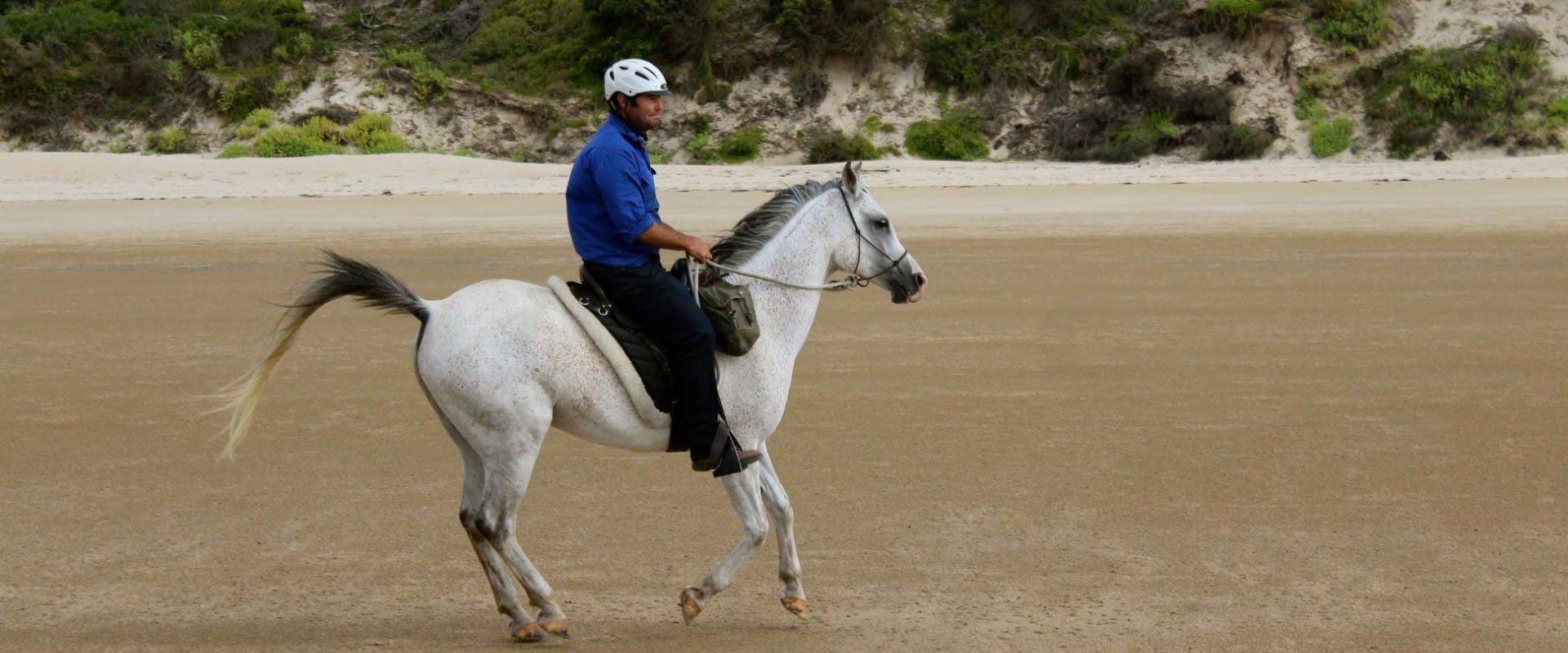
by Wild About Hooves
•
16 June 2015
Meet my magnificent mount, Omani City Smog who I completed the challenging 160km ride on. The Tom Quilty Gold Cup is Australia’s equivalent to the World Cup of Endurance Riding. This 160km ride is the holy grail of endurance and to successfully complete and earn a coveted silver buckle is the goal. It's a real treasure to be awarded. I was honoured to ride for my friend Carol Layton, a well respected equine nutritionist. Omani City Smog was my mount and I fondly called him Smokey Jo Kilometre Eater often during the epic adventure. Carol rode her favourite horse, Omani Mr Squiggle. We were blessed to be sponsored by a hoof boot company. The horses wore the glue on shells in bright orange and they certainly attracted a lot of attention. For a hundred million reasons, they are the way to go!. At the starting line at midnight, mounted upon a horse that's not mine, in a different state of Oz, staring around at a crowd of over 340 excited horses, it was that moment before it all begins is when my mind is most quiet and I realize ‘Damn, I’m the luckiest person alive’. Finishing is an amazing bonus – but sometimes it's easy to lose sight of the struggle it took to just show up. The Tom Quilty takes years of preparation and planning. As much as the start terrifies me and my nerves overwhelm me, the butterflies in my stomach turn into large birds; it’s the start line that seems to offer clarity to all the lead up turmoil. We headed out on a beautiful starry night on a bitumen stretch of road and the noise of thousands of metal shoes drowned out the silence. So damn loud! Our booted horses make no noise. Such an amazing difference and one that offers a competitive edge in the dark of night when you want to surprise and overtake someone ahead. Hoof Boots offer so many benefits and I’m going to highlight some of the important things that I “bang on” about as an educator in hoof care so bear with me… A hoof fitted comfortably inside a boot made of tough, elastic materials is free to expand and contract, pump blood normally and torque side to side with each step. The hoof is meant to spread on weightbearing. It is the natural shock absorbing feature of the hoof. A shod horse on the other hand is unable to flex and thus is at a disadvantage from the impacts of concussion from a steel shoe, it has reduced circulation and loses feeling and traction. Concussion is passed off to joints and ligaments higher in the limbs and body which are not designed to dissipate shock. Boots are cost effective – initial outlay and fitting can appear expensive but when you weigh up the lifespan of the boots compared to shoeing costs over the same time frame, boots are a cheaper alternative. Boots don’t wear like a metal shoe. If you learn to trim yourself and use boots you will save yourself a fortune. We timed ourselves to see how long it took to trim and glue on boot shells and it was 20minutes. Sensational time saving too especially if you want to horse around. Once they are glued on we don’t have to worry about them. Hoof boots don’t compromise the horses way of going. They offered protection for the varied terrain that challenged us during the ride. Gravel roads, bitumen stretches, rocky trails, muddy tracks. 160 long kilometres (100 miles) of everything. They offer the best gripping hoof wear known to horse. The boots offer protection from excess wear, bruising and concussion. I love that they offer ease of mind while you have your hands full with your super fit, forward moving horse. You just don’t have to worry you might lose a shoe or boot. These boots absorb concussion, a huge benefit over a long distance, challenging ride. The following day our horses showed no signs of edema or swelling in their legs. As I walked them around the grounds the day after the Quilty, I noticed lots of shod horses covered in “swelldown” poultice or fill in their legs. I admired our horses and sighed relief that we suffer so few problems with hoof issues. Why don’t more riders use them? Hoof Boots have been designed with the performance horse in mind.They are lightweight and infallible. I apologise if my blurb sounds like an advertorial but I swear and declare Hoof Boots are the best on the market for endurance horses. Why would anyone use metal shoes when HOOF BOOTS ARE THE WAY TO GO!
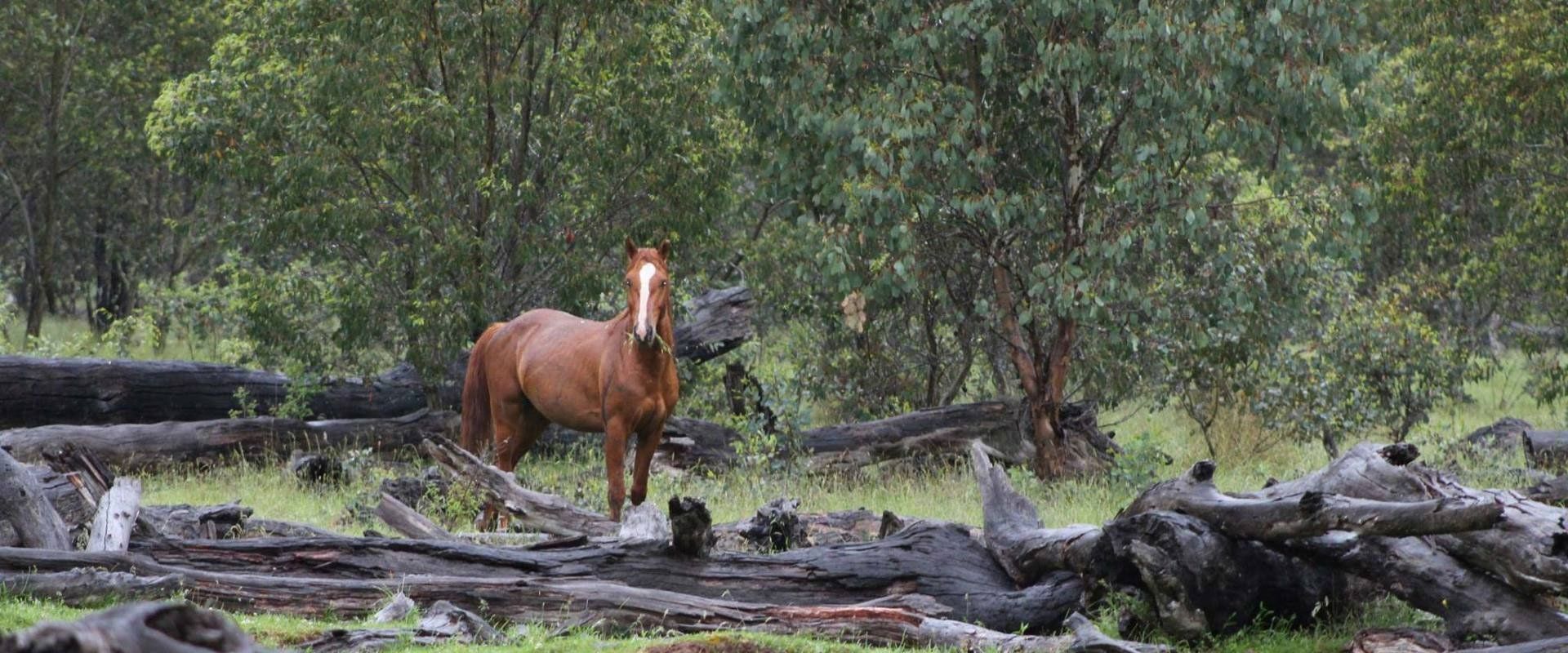
by Wild About Hooves
•
6 October 2014
Horses will tell you loud and clear how well you’re trimming, you just have to listen and watch carefully. If you’re out riding and your horse is travelling the best ever, jump off and check his hooves and aim to trim to maintain them how he likes them. It’s that easy. After all – the horse is the best critic of your work. If he hobbles off after your trim, then you have been too invasive. With a natural maintenance trim your horse should feel better after a trim not sensitive. The truth is, natural hoof care advocates who abide by the wild horse as model to trim to, have a goal to work toward or a blueprint to fall back on. They do not promote solar loading or excessive bevelling of the wall or invasive trimming of the bars and sole. In fact, that sort of trim violates everything. It compromises the horses comfort and your time horsing around. There is a lot of confusion and conflicting information mainly delivered by scientists seeking the ”optimal morphometric model” Your guide should always be the wild horse and the truth stands before you – your own horse on his sound hooves. Photo – desert brumby hoof by Marg Richardson – and photo 2 of me and my horse, Imaj Zamir clocking up 4000 successful kilometres in Endurance barefoot.
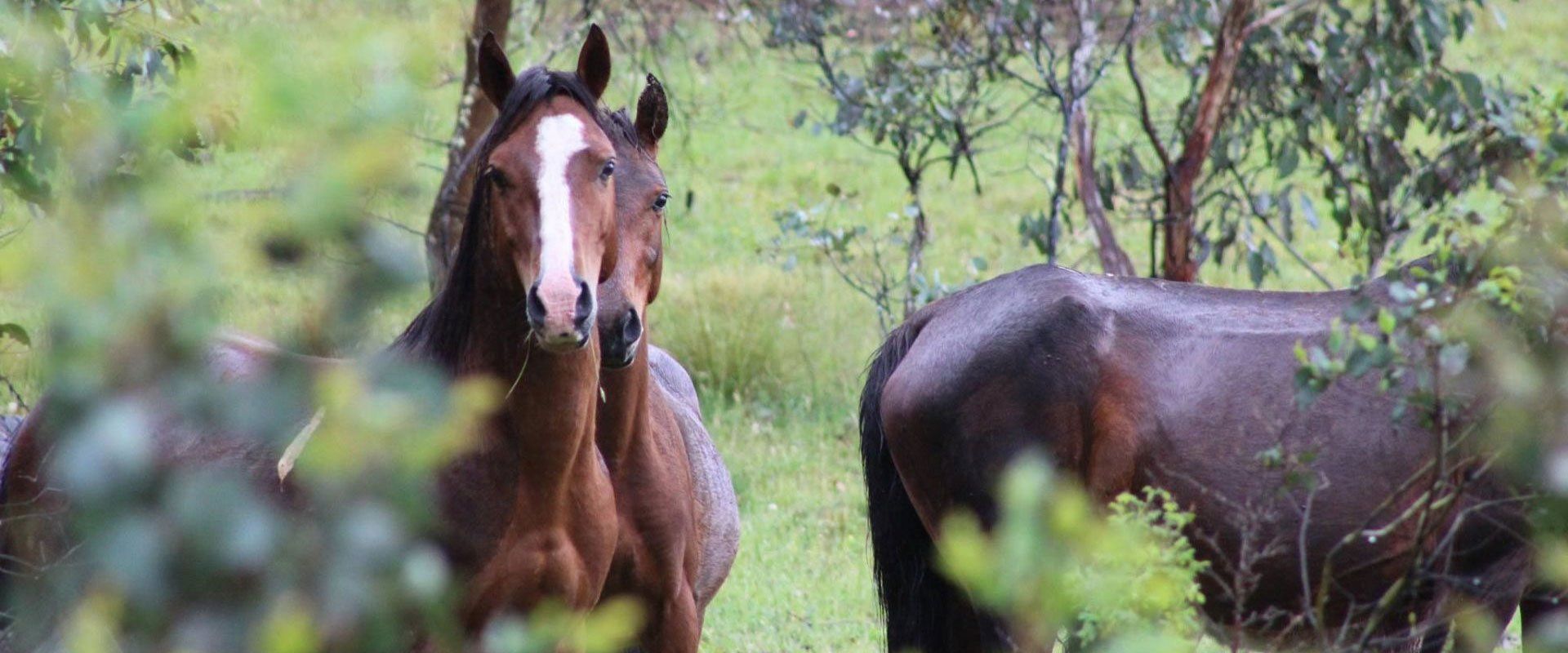
by Wild About Hooves
•
18 August 2014
VIDEO DEMO: https://youtu.be/tmc60BuGtqY Designed by professional trimmers in the field who’ve “road tested” all the hoof stands in the market. This stand aims to make trimming really EASY. Its “Horse Endorsed” too. Trialled by every size and make of horse – its customized to suit them all. (Shetlands to Clydesdales) Its user friendly: Set it in position to rest the horse's hoof in the cradle and when you finish underneath then push or kick it into position to put the hoof forward. Its lightweight and its tough – kick and knock it about – its designed to be your “work horse” and SAVE YOUR BACK. It works a “treat” on uneven terrain too. An asset for your trim kit. Price $175 postage around Australia add $25. Dimensions – at its highest (with cradle raised) the WILD hoof stand is 500mm. At its lowest position, it is 300mm. And when the hoof is taken forward onto any of the tripod sections they measure in at 375mm. This stand was designed and created by Jeremy Ford when he hurt his back earlier in the year. As a farrier who never used a hoof stand, he designed one that he is happy to work with or work for him. It’s simple to use, no changing parts, robust and lightweight, affordable and best of all, the Horses/ponies/donkeys love it. After all- they are the number one “PRODUCT CRITIC”.
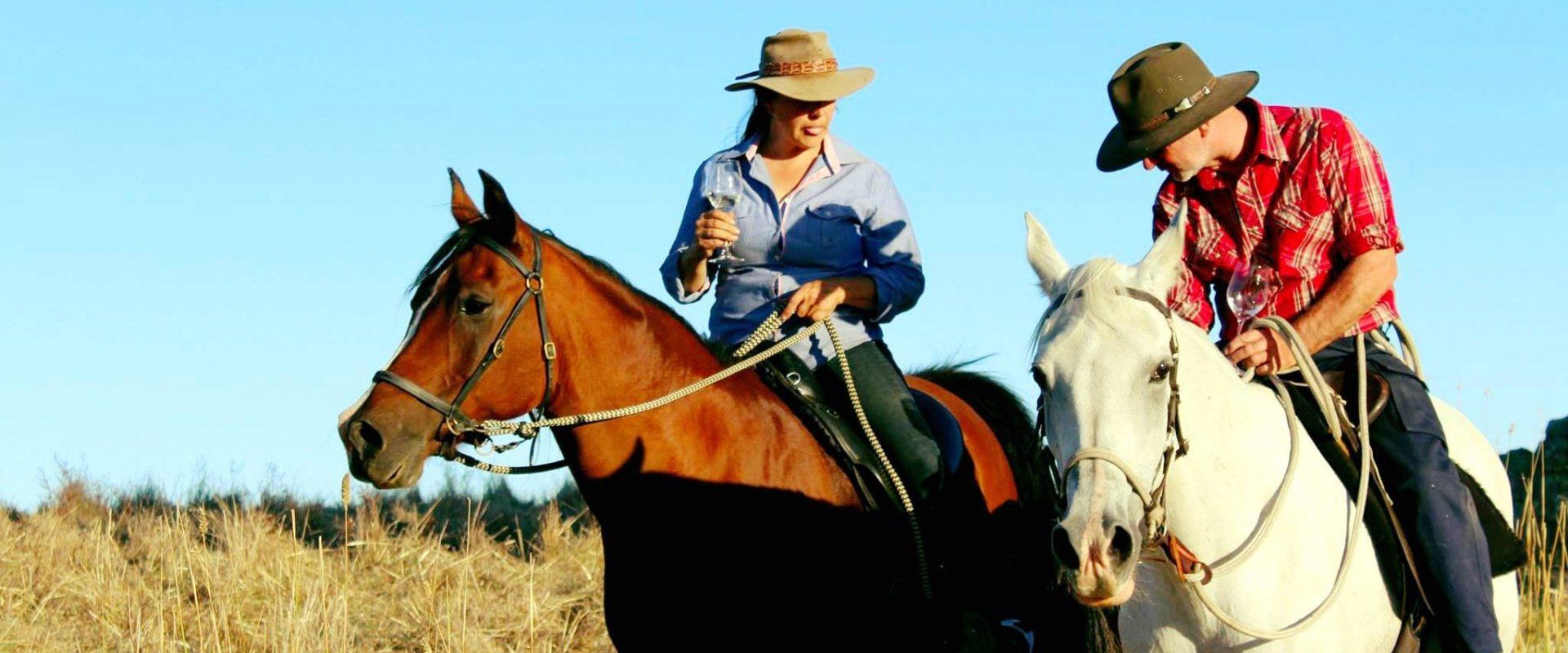
by Admin
•
26 April 2014
ROCK CRUNCHING HOOVES – ENDURANCE HORSE IMAJ ZAMIR The sport of endurance is the ultimate test of the bare hoof. Endurance rider Jen Clingly and her Arabian, Imaj Zamir made Australian history as the first to run 100 mile endurance competition without shoes, her horse Zamir has clocked up close to 3000km. He secured a converted Tom Quilty buckle (Australia’s famous endurance ride – 100 miles ridden in a day). He was also the first horse in Australia to win a ride outright barefoot and secure best conditioned horse and at the 2005 & 2008 Tasmanian State Championships he won the lightweight division in the 90km ride barefoot.

